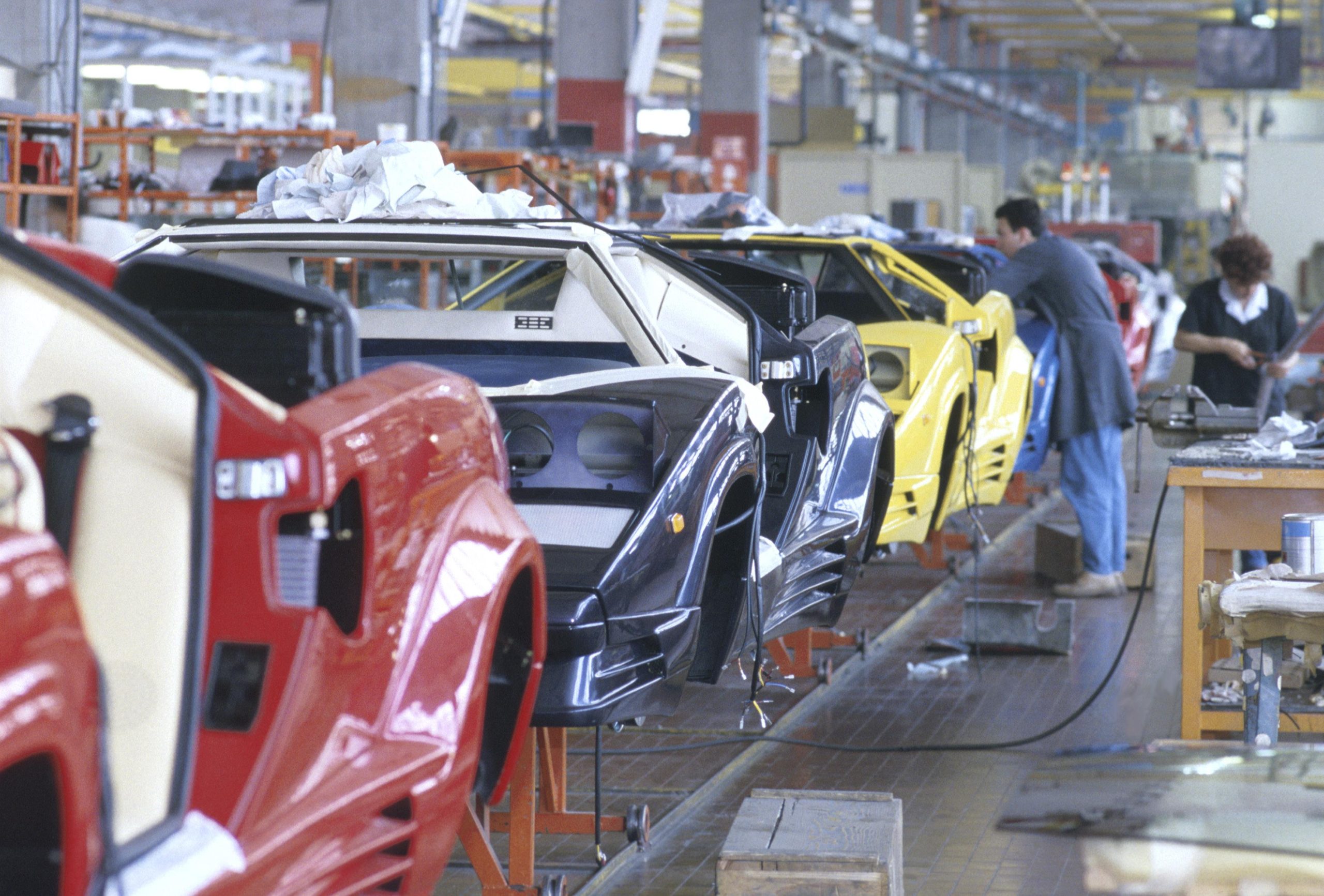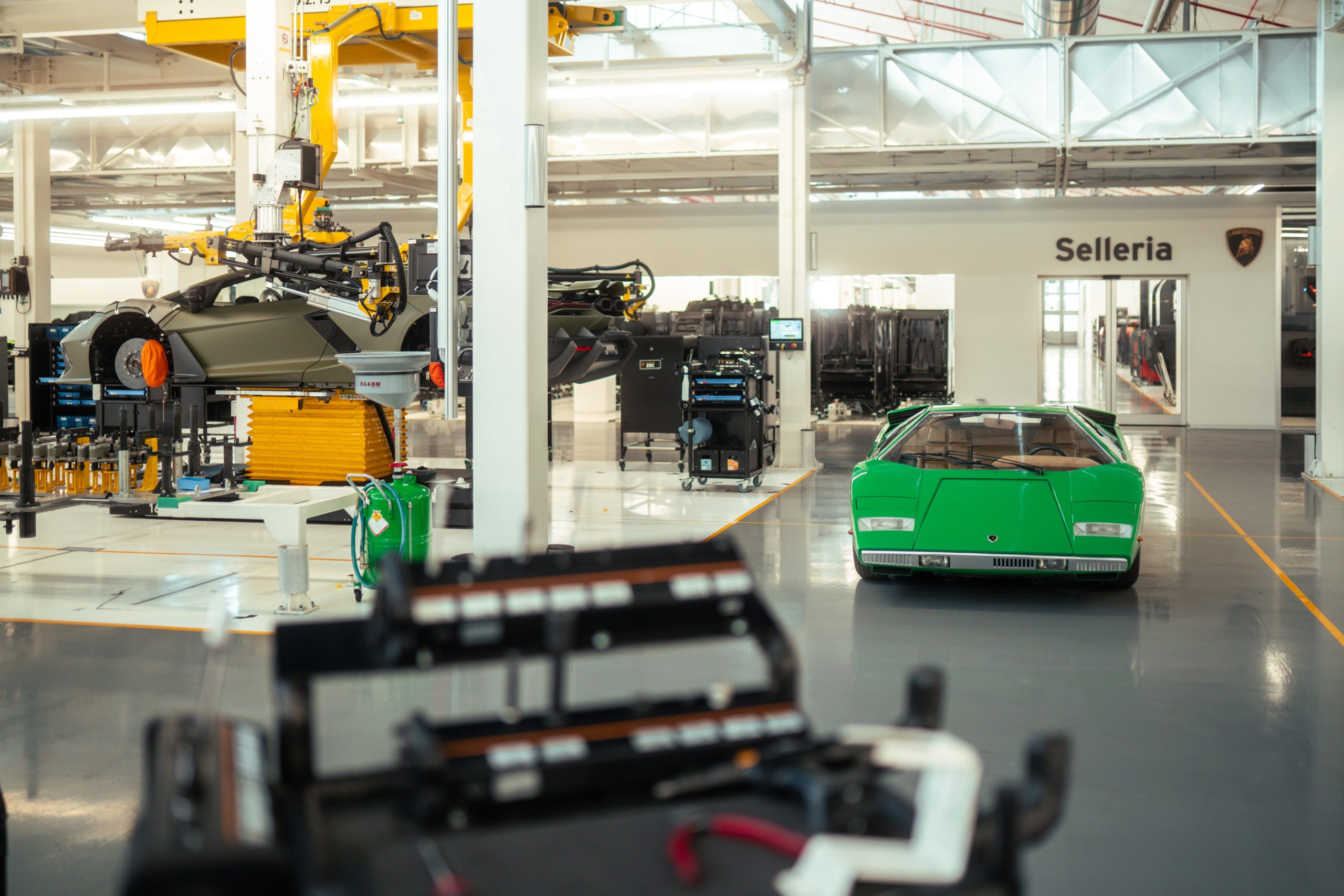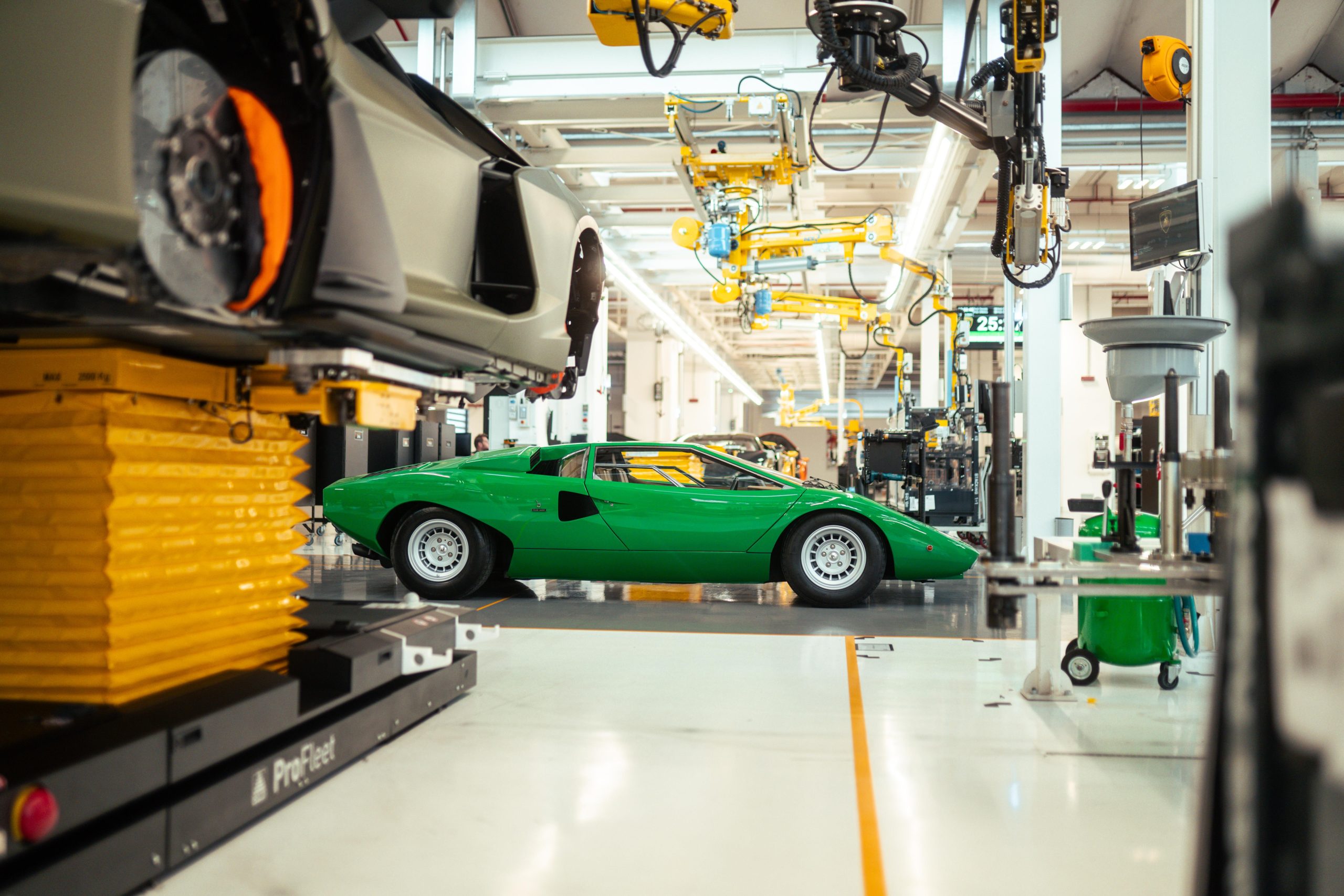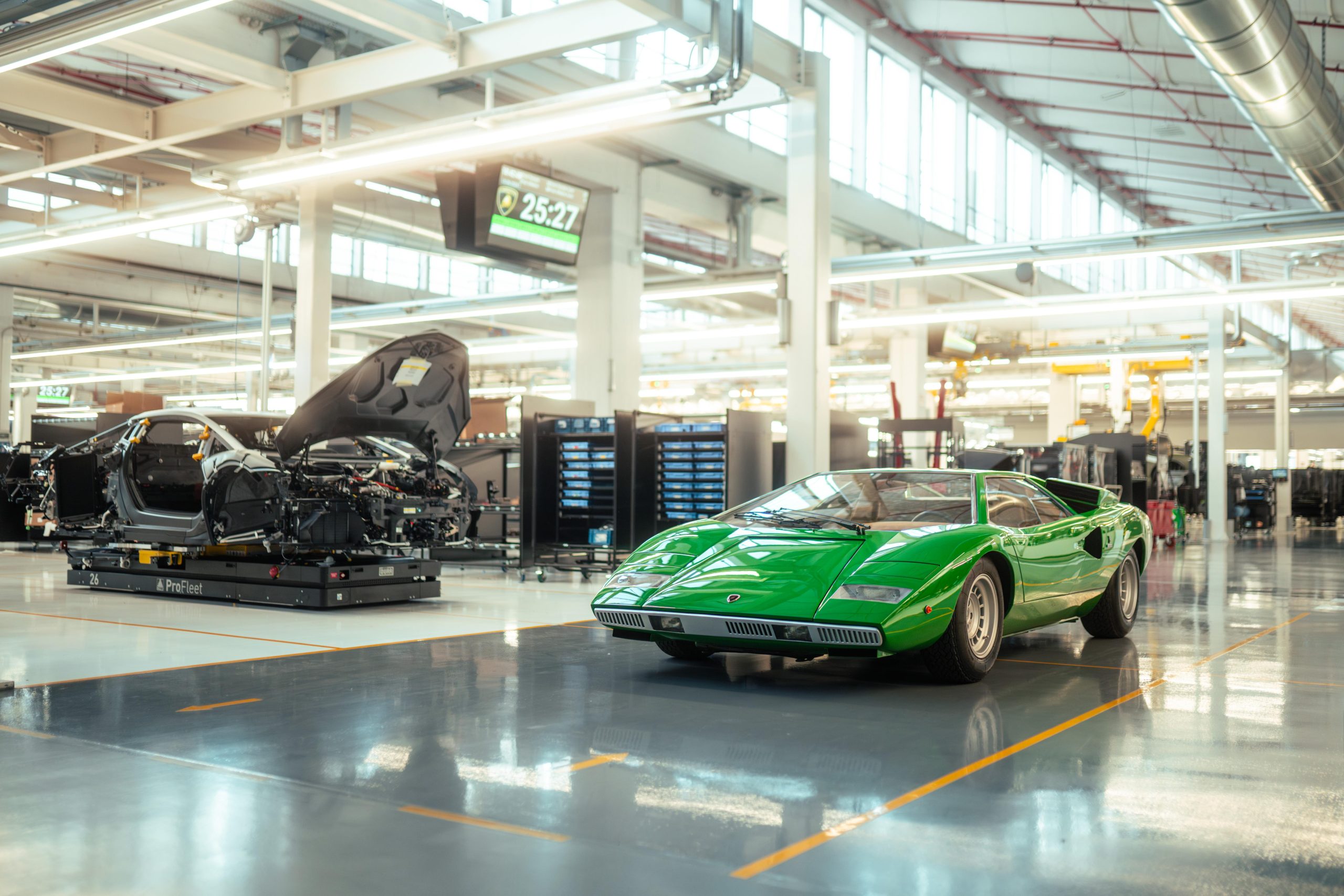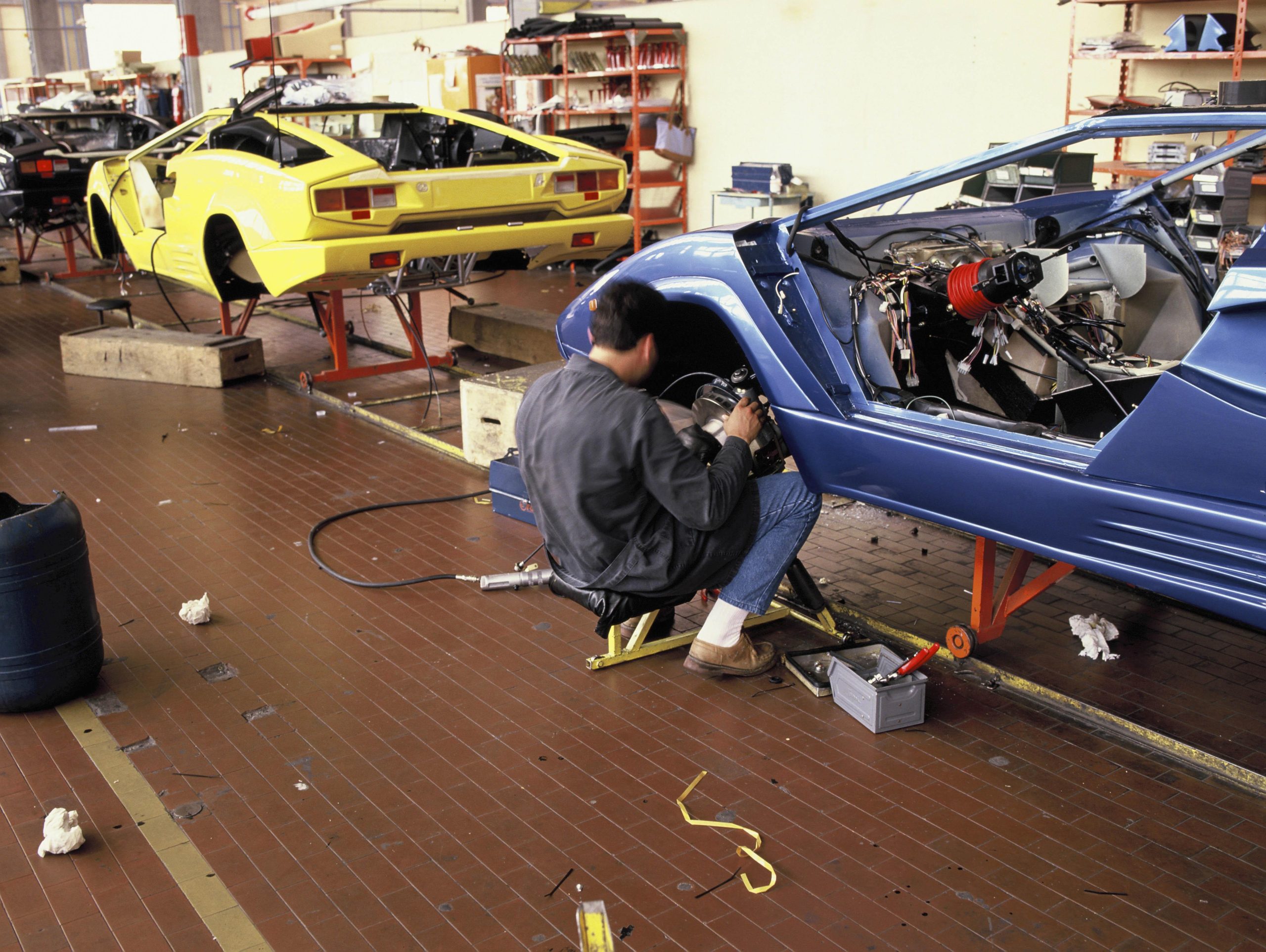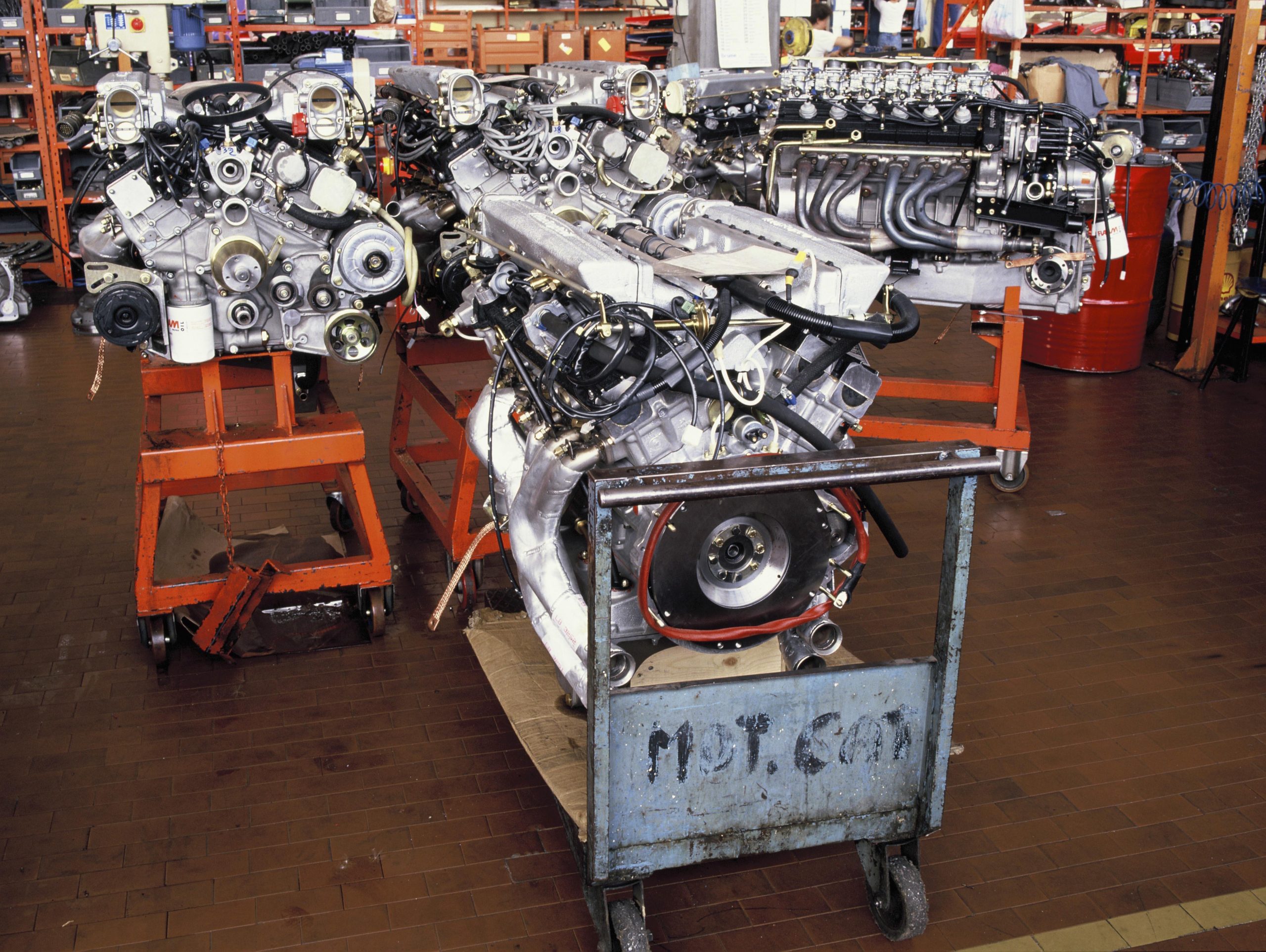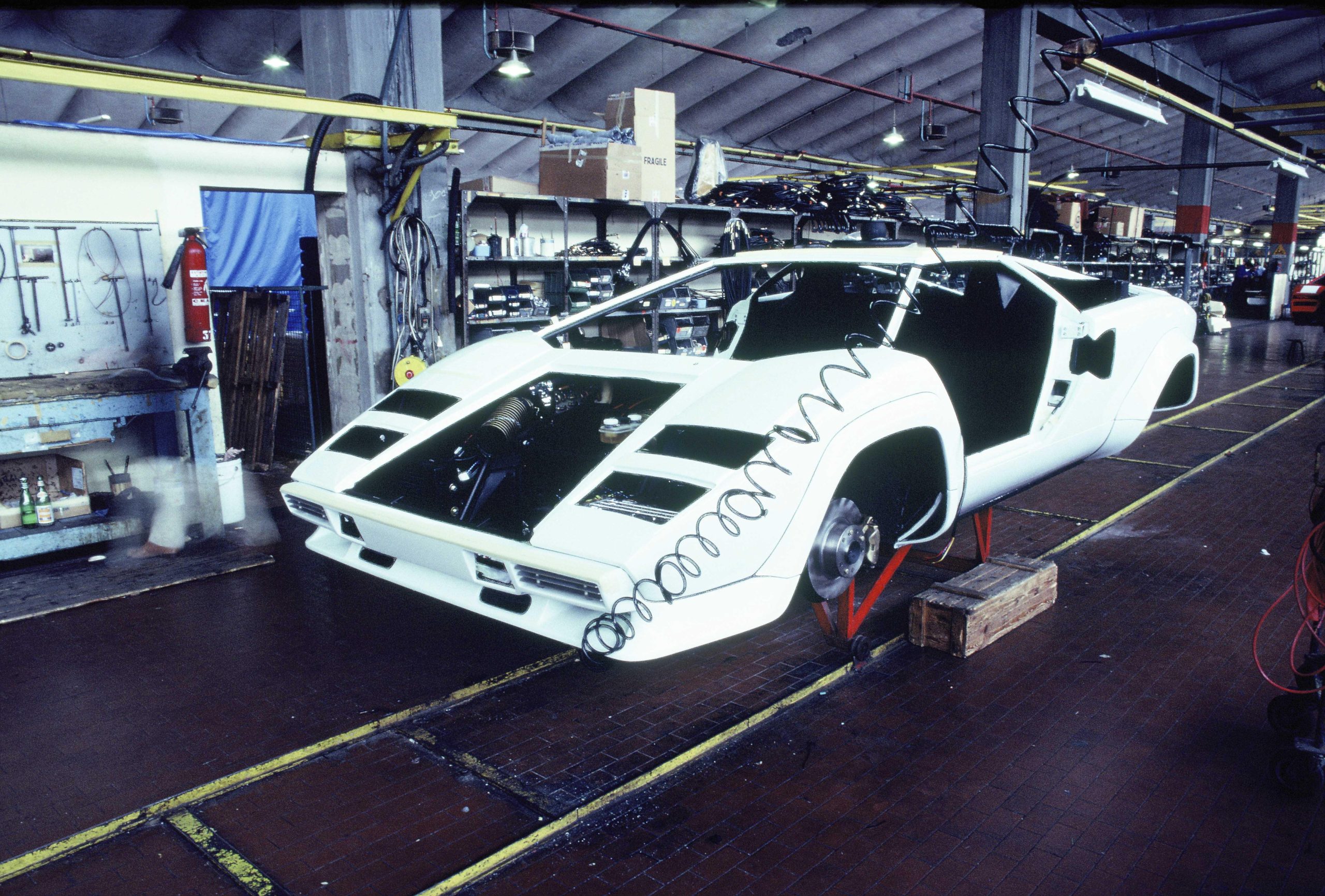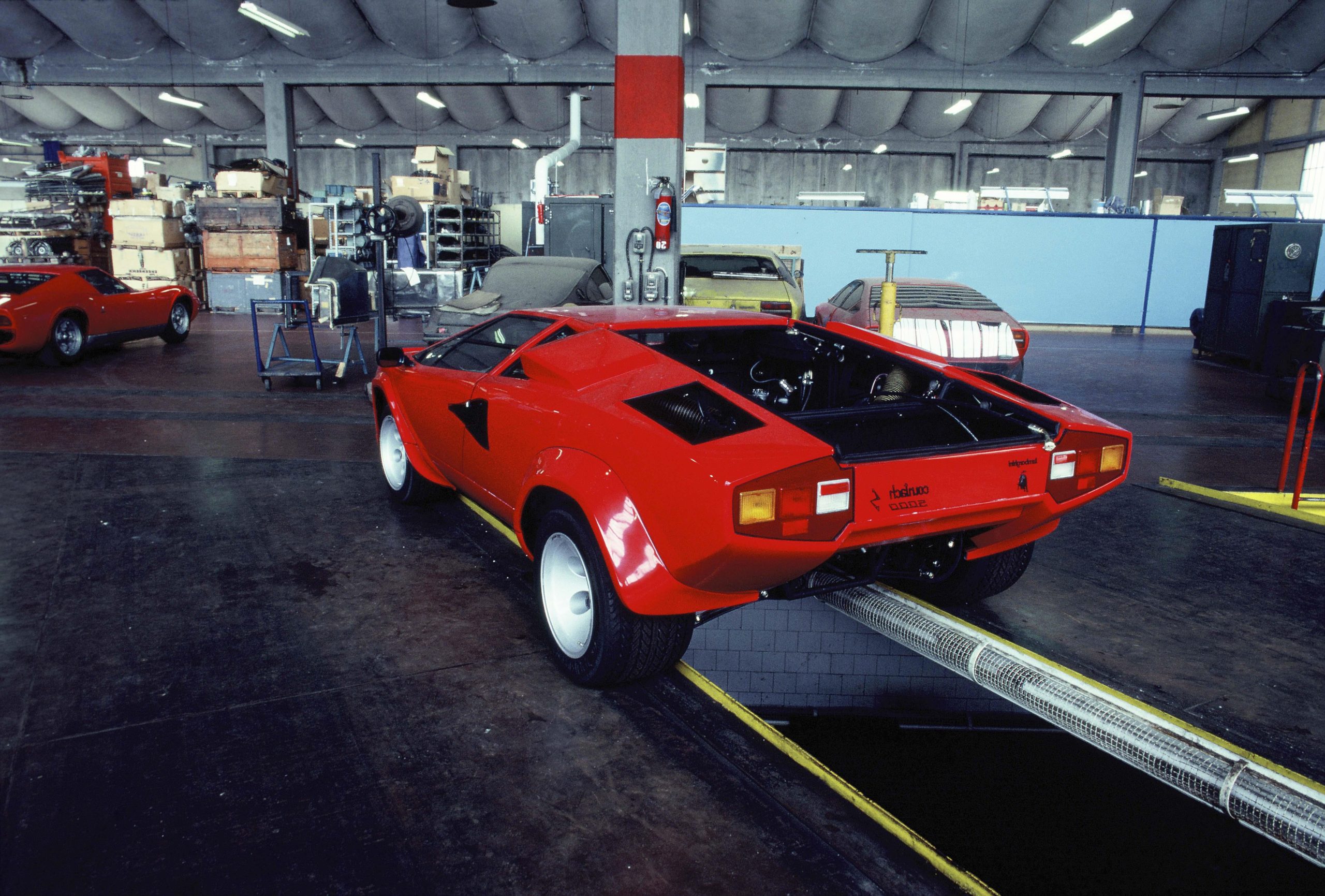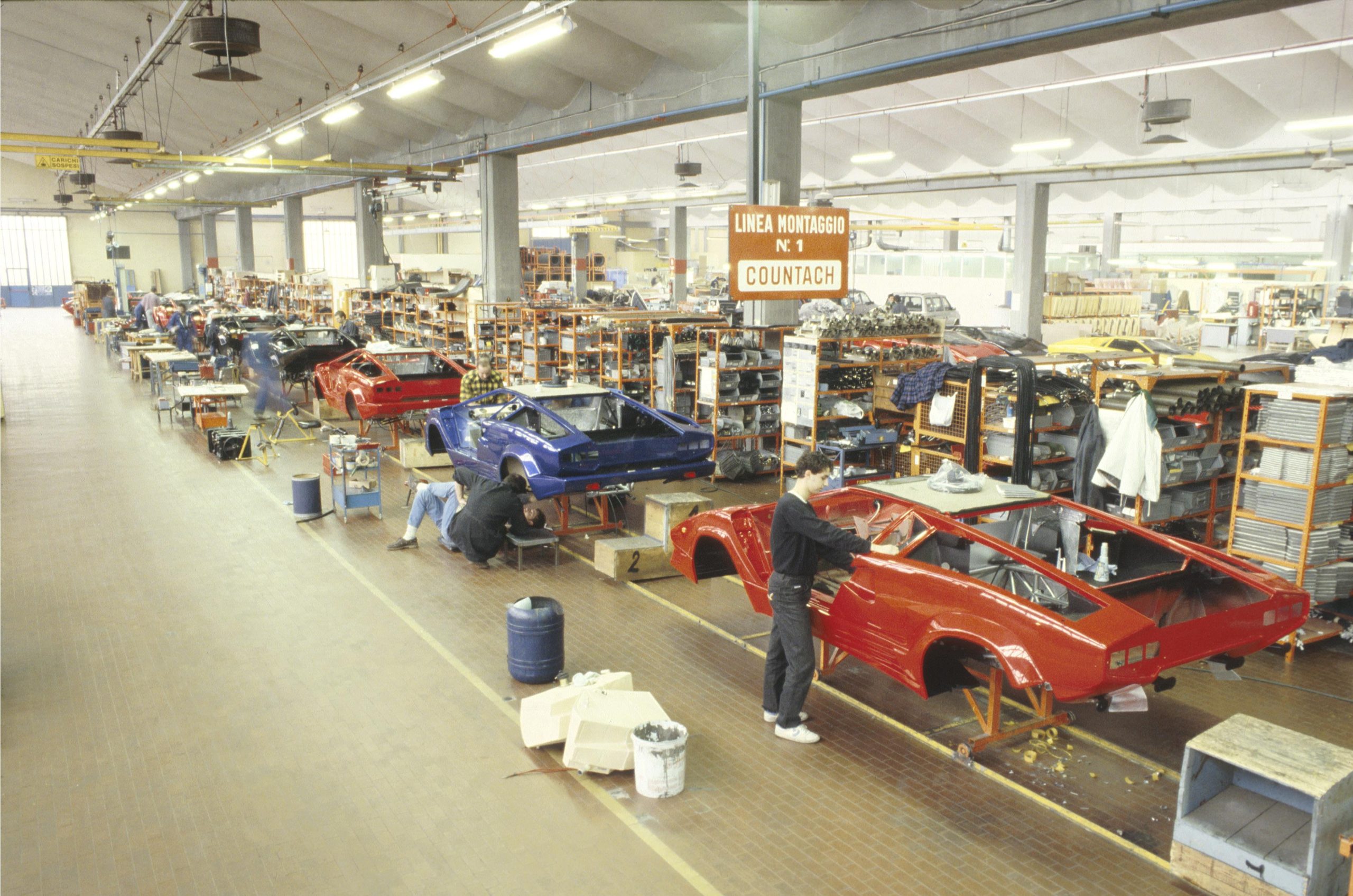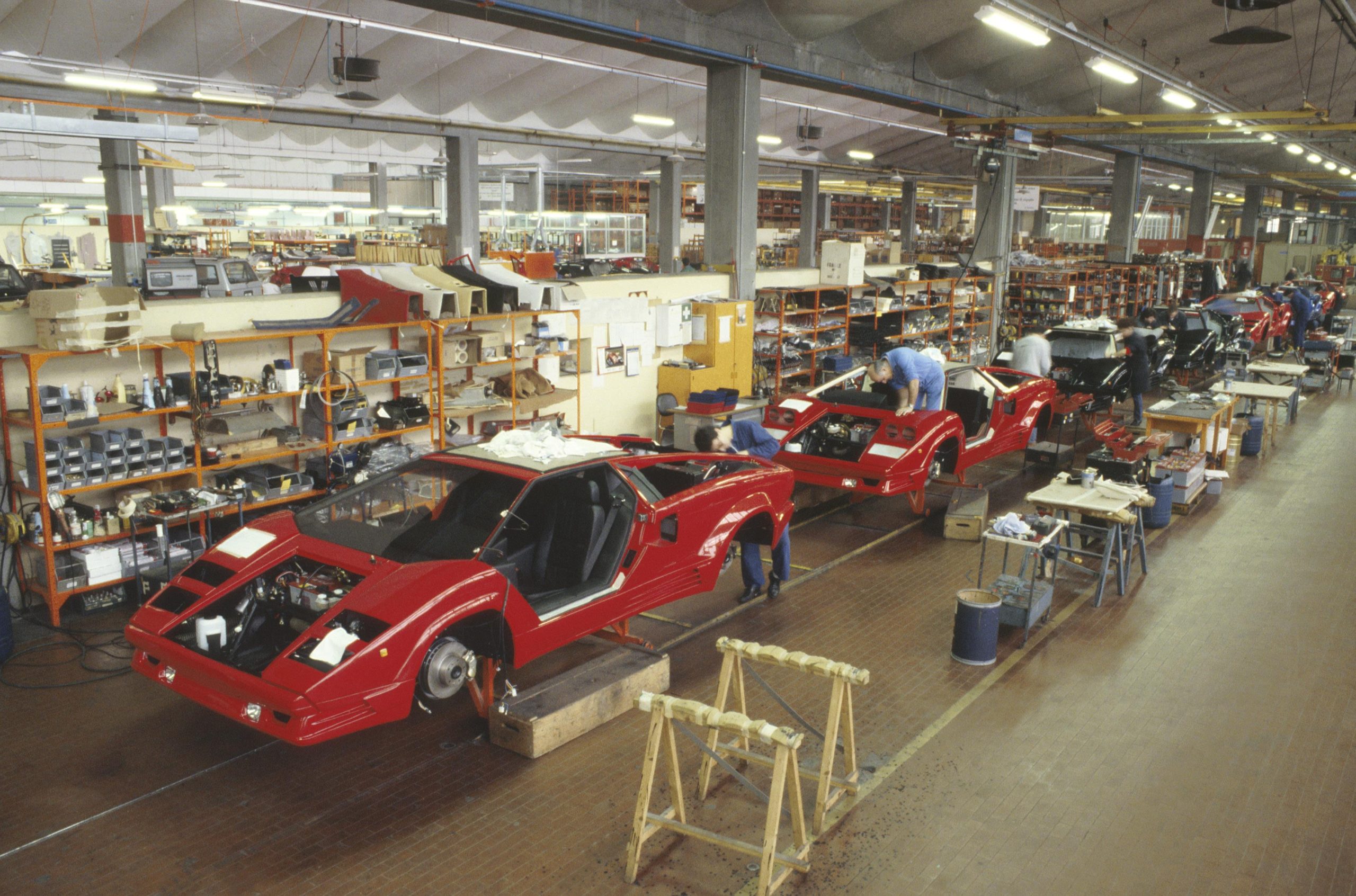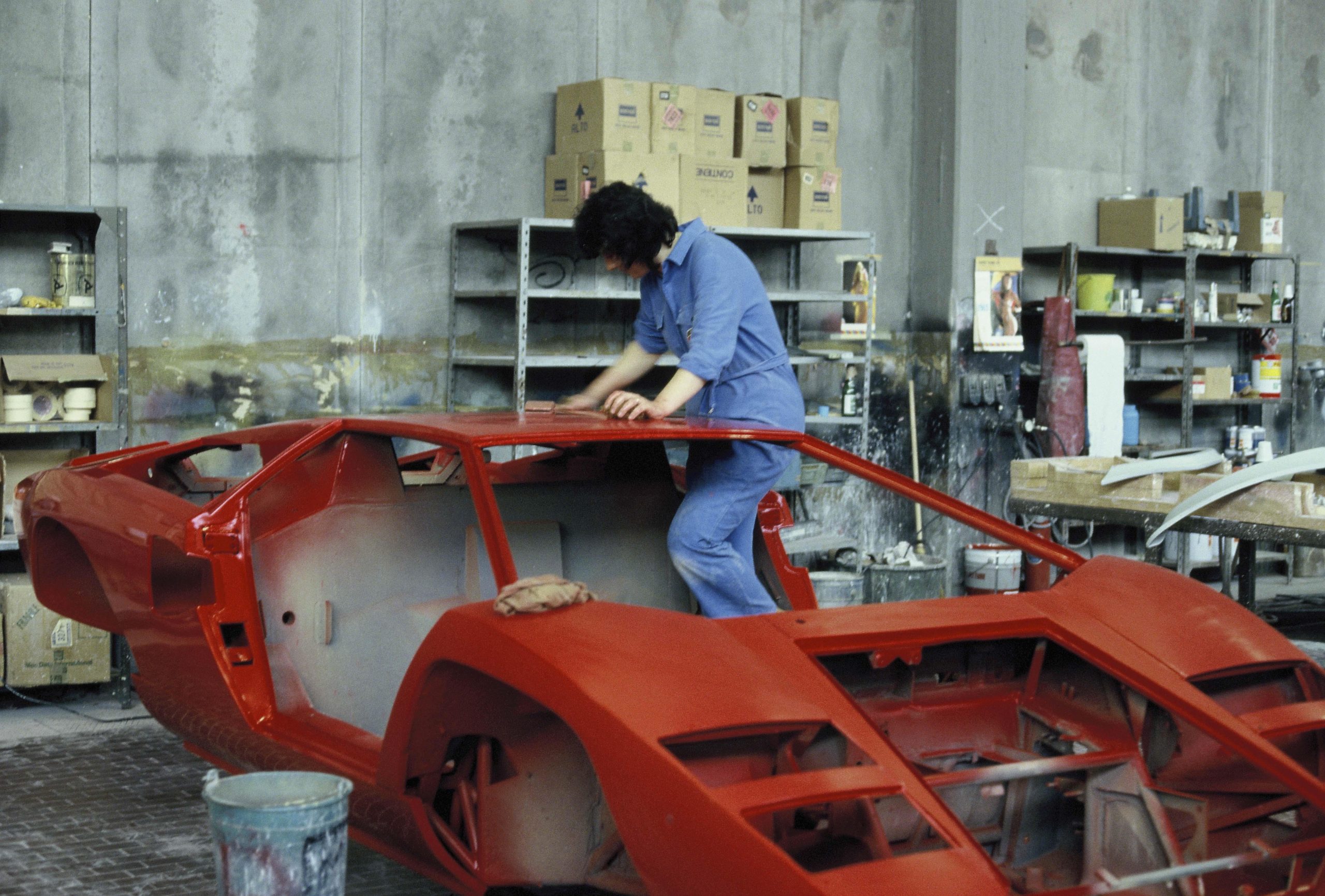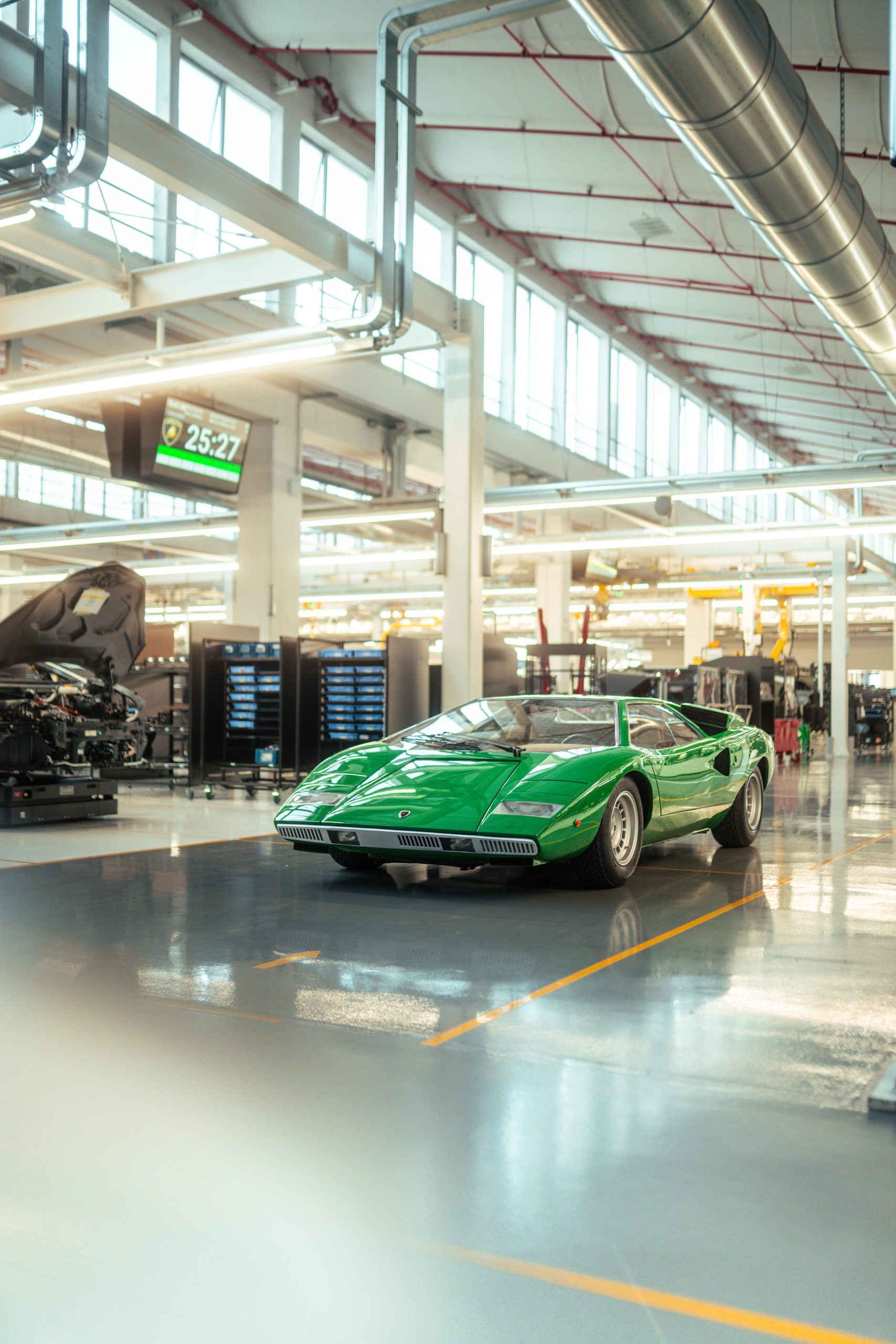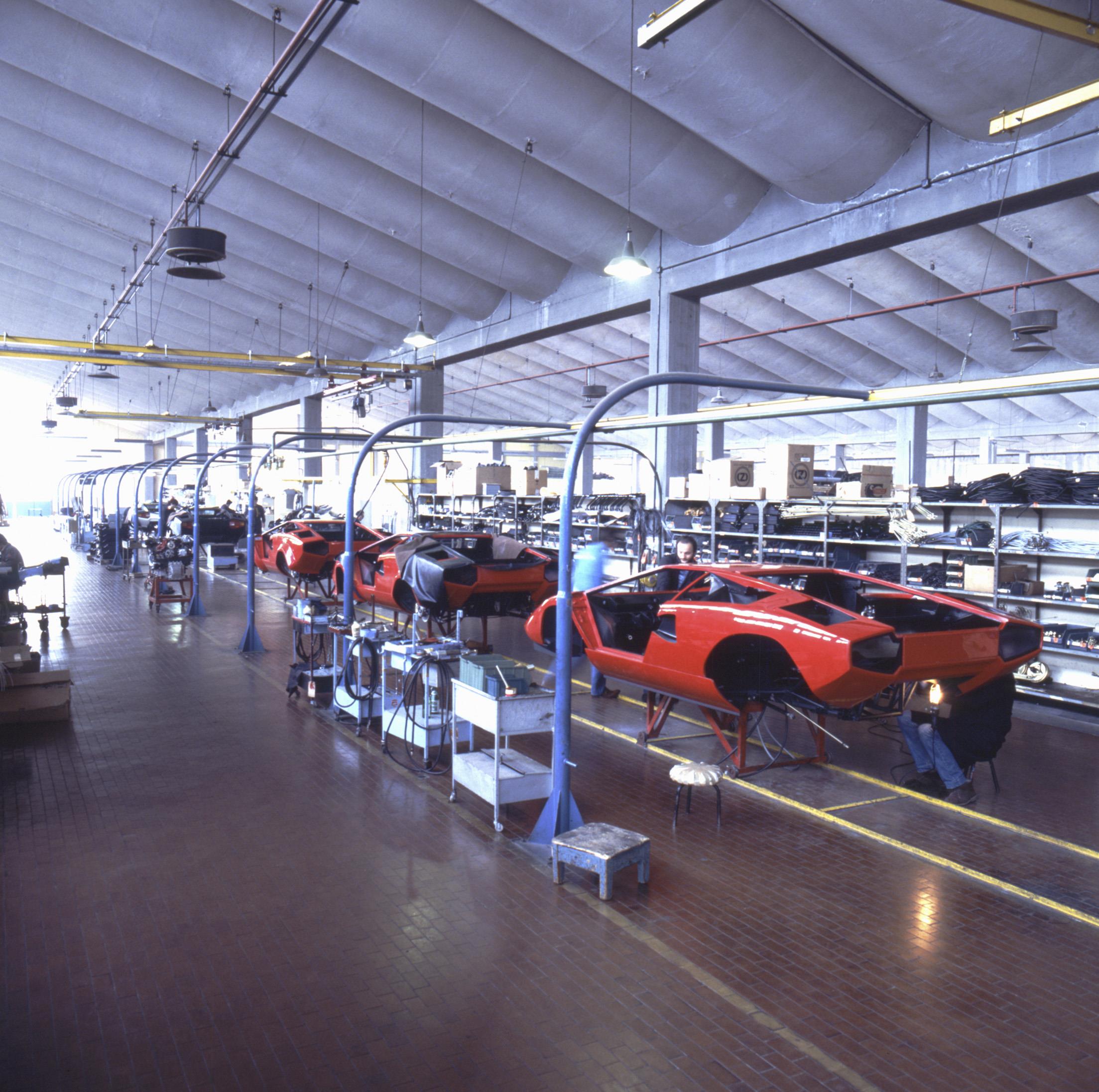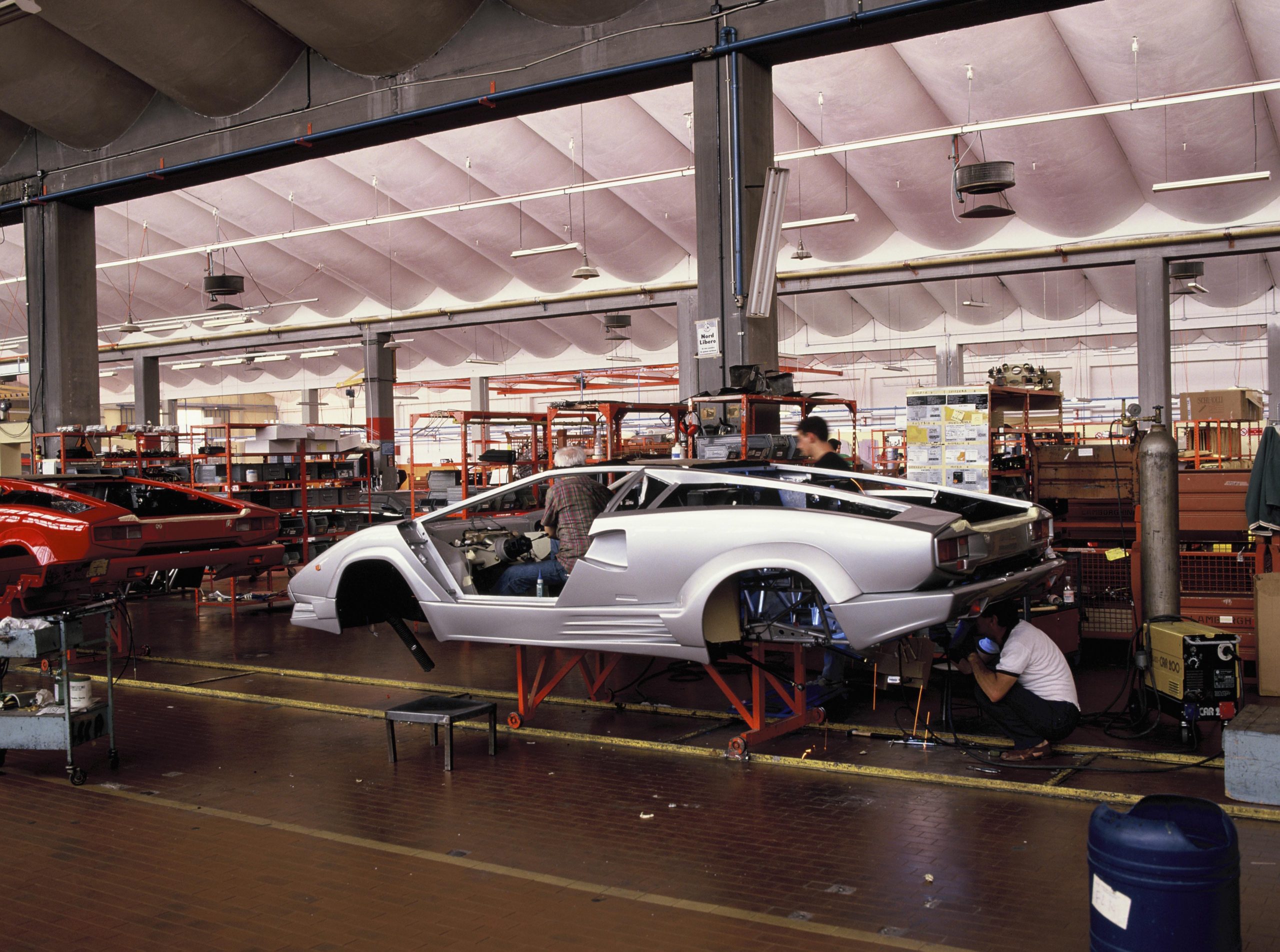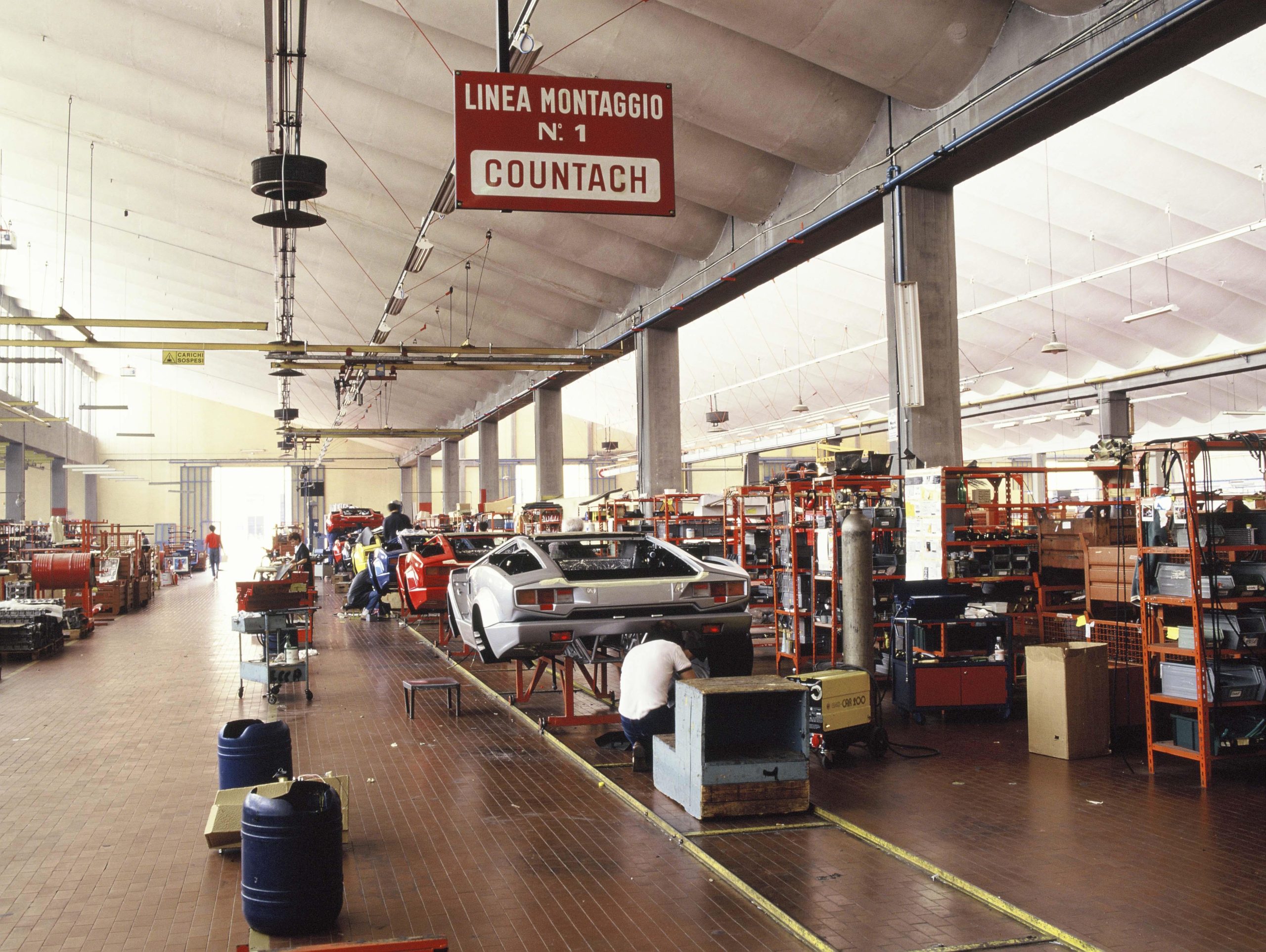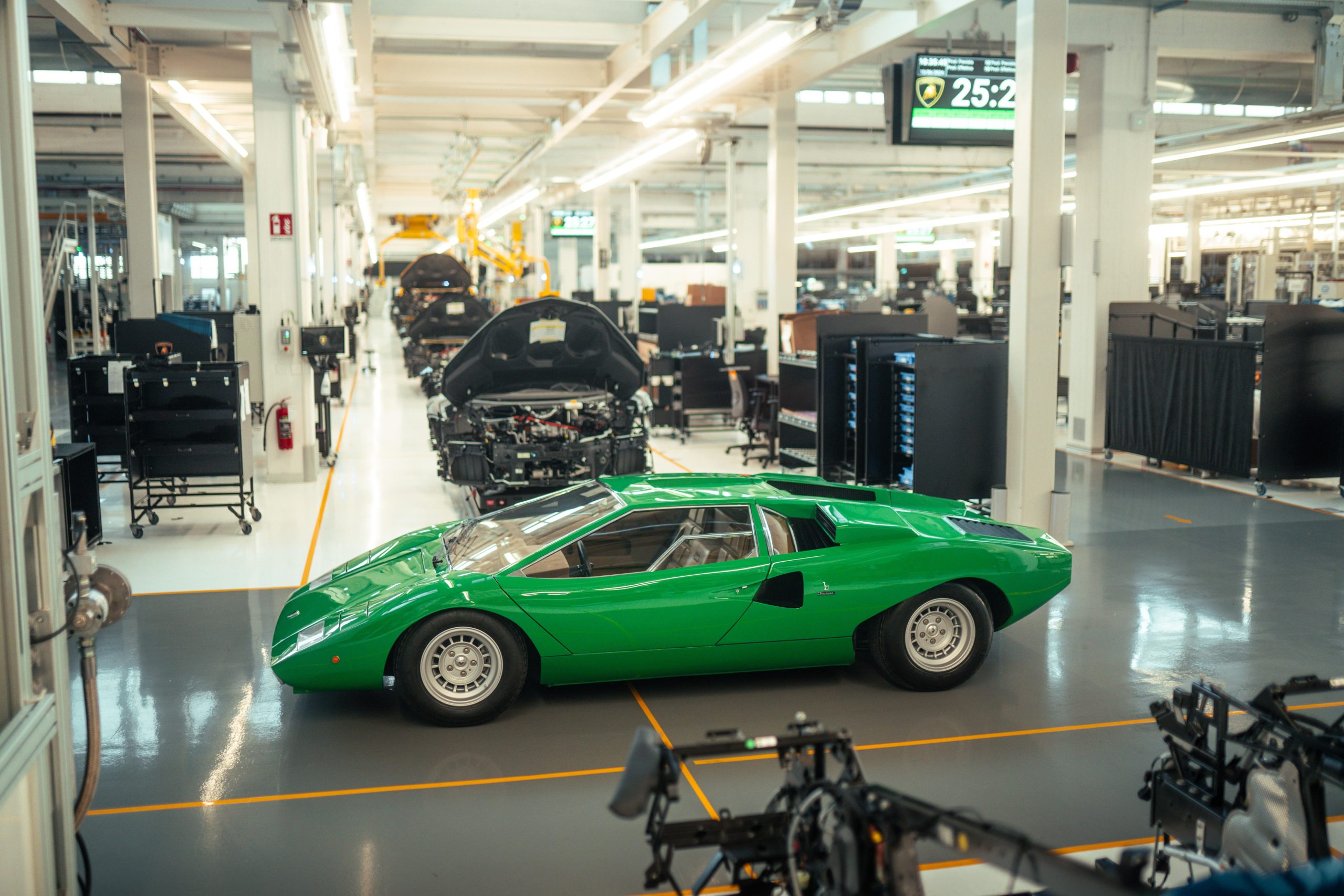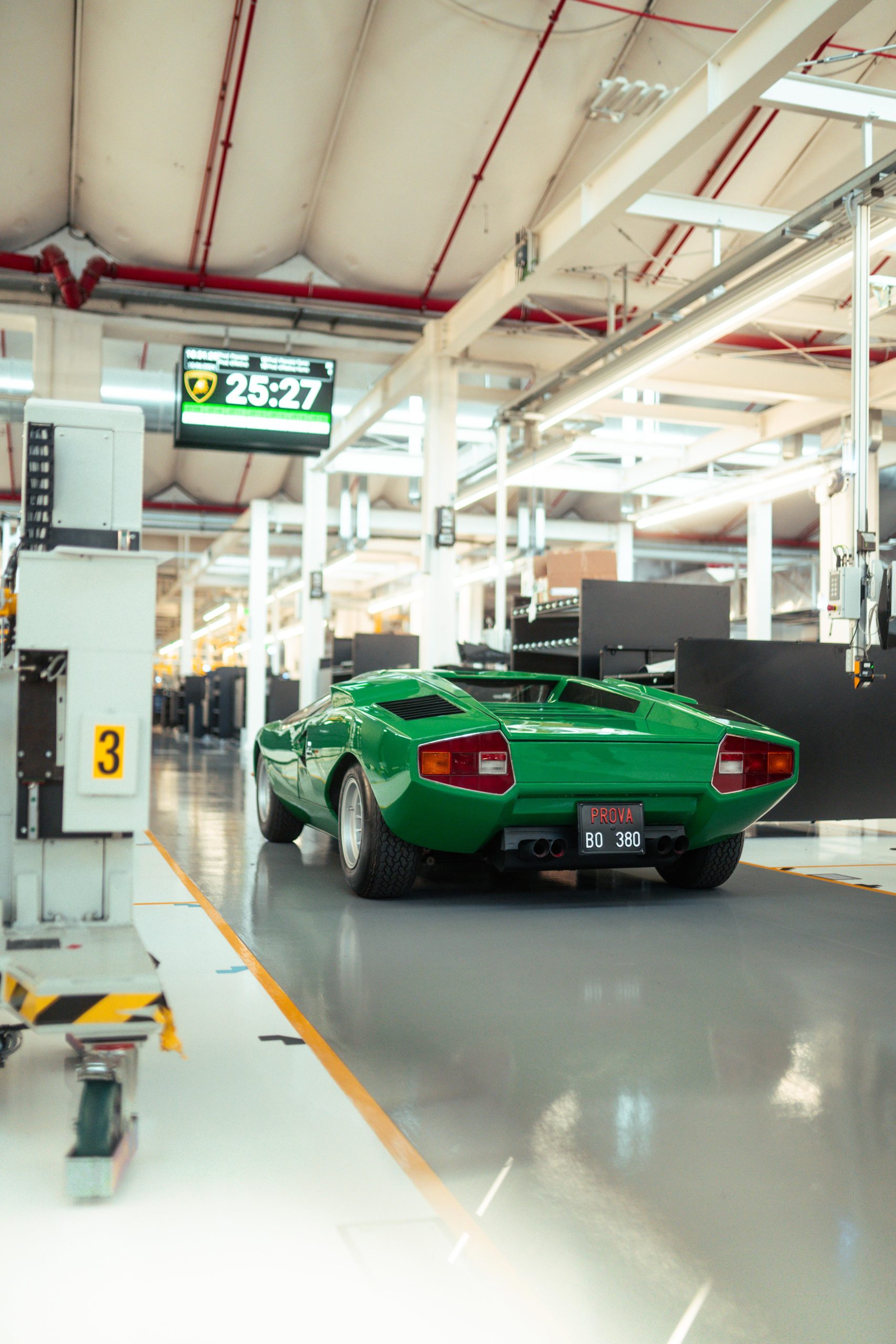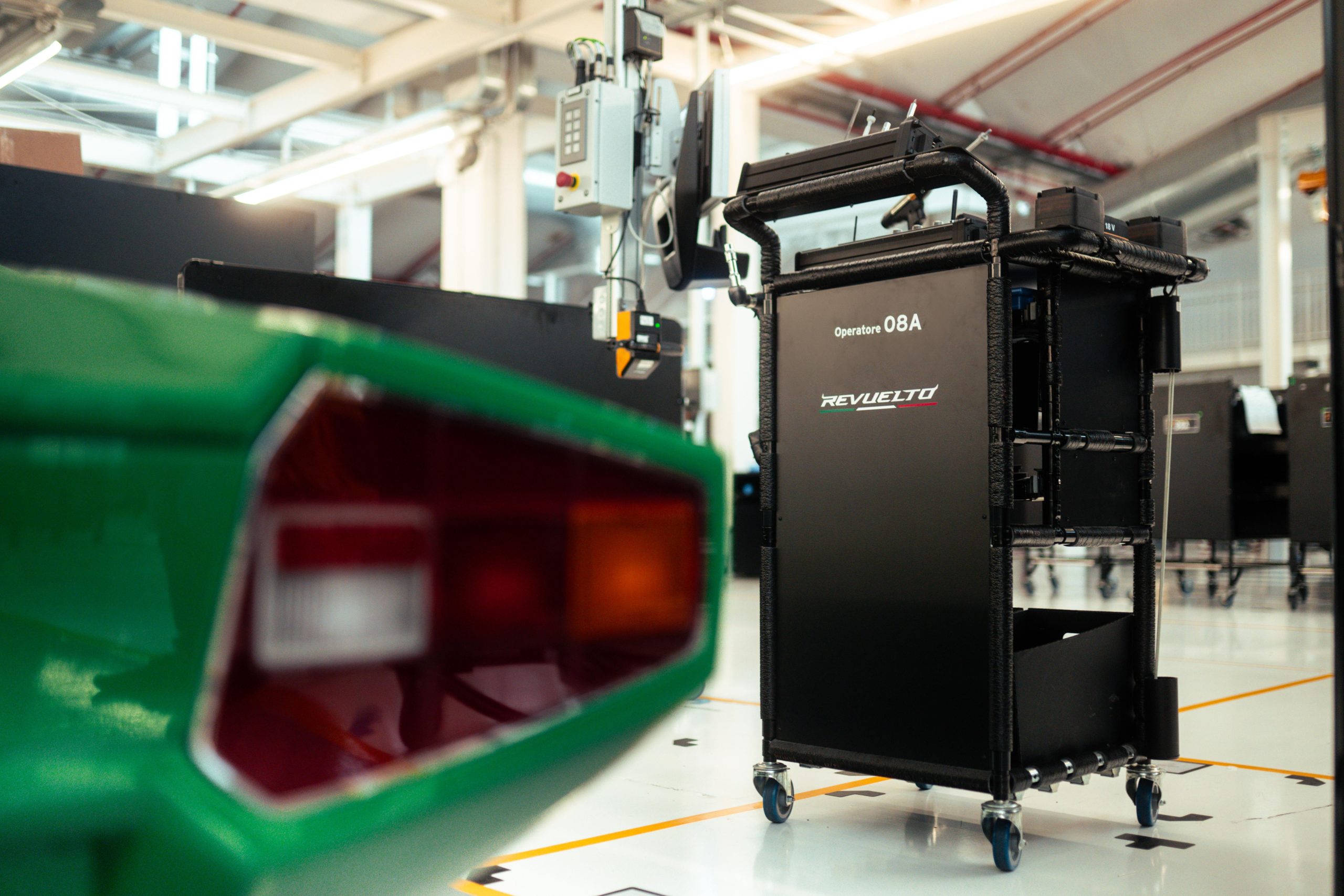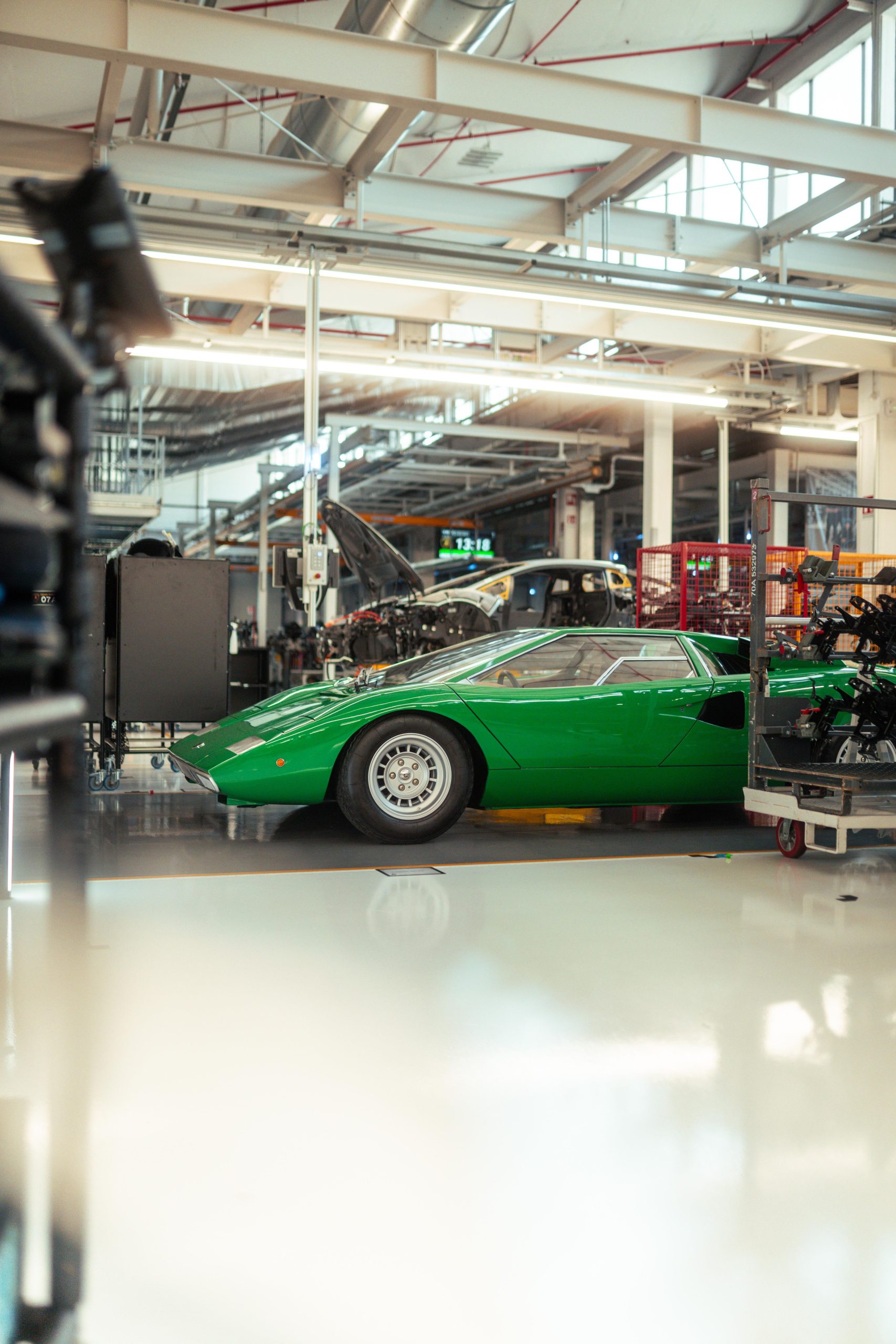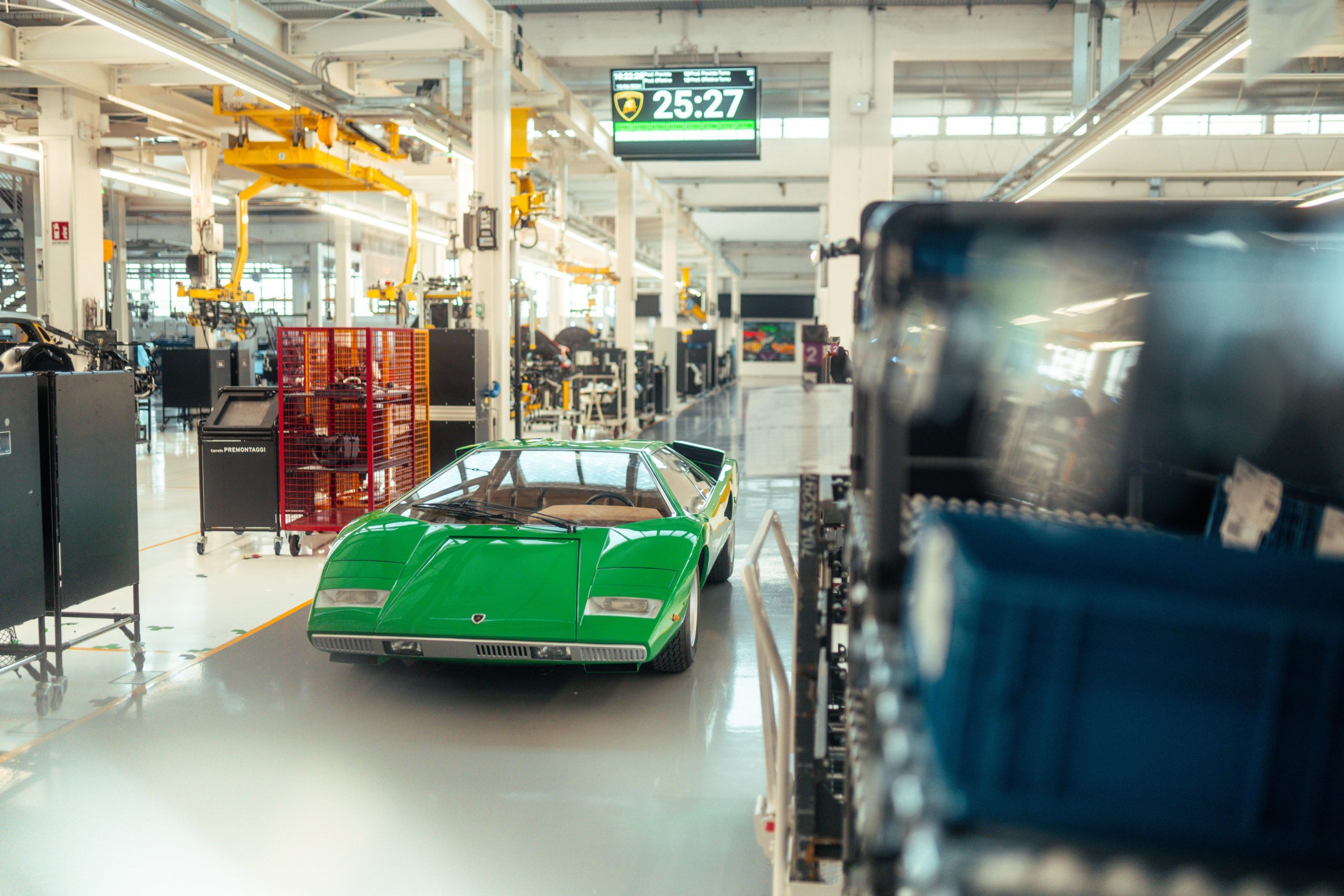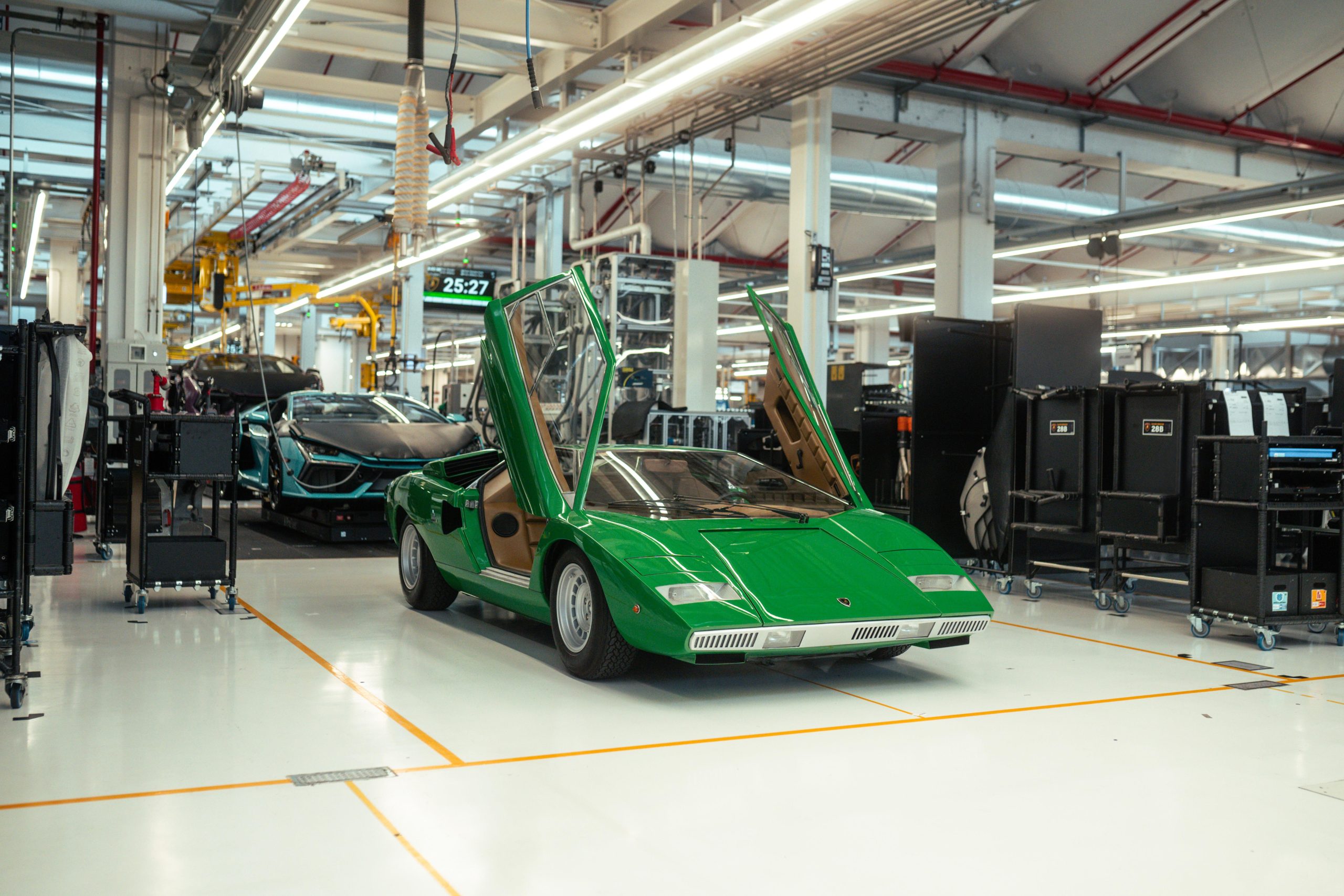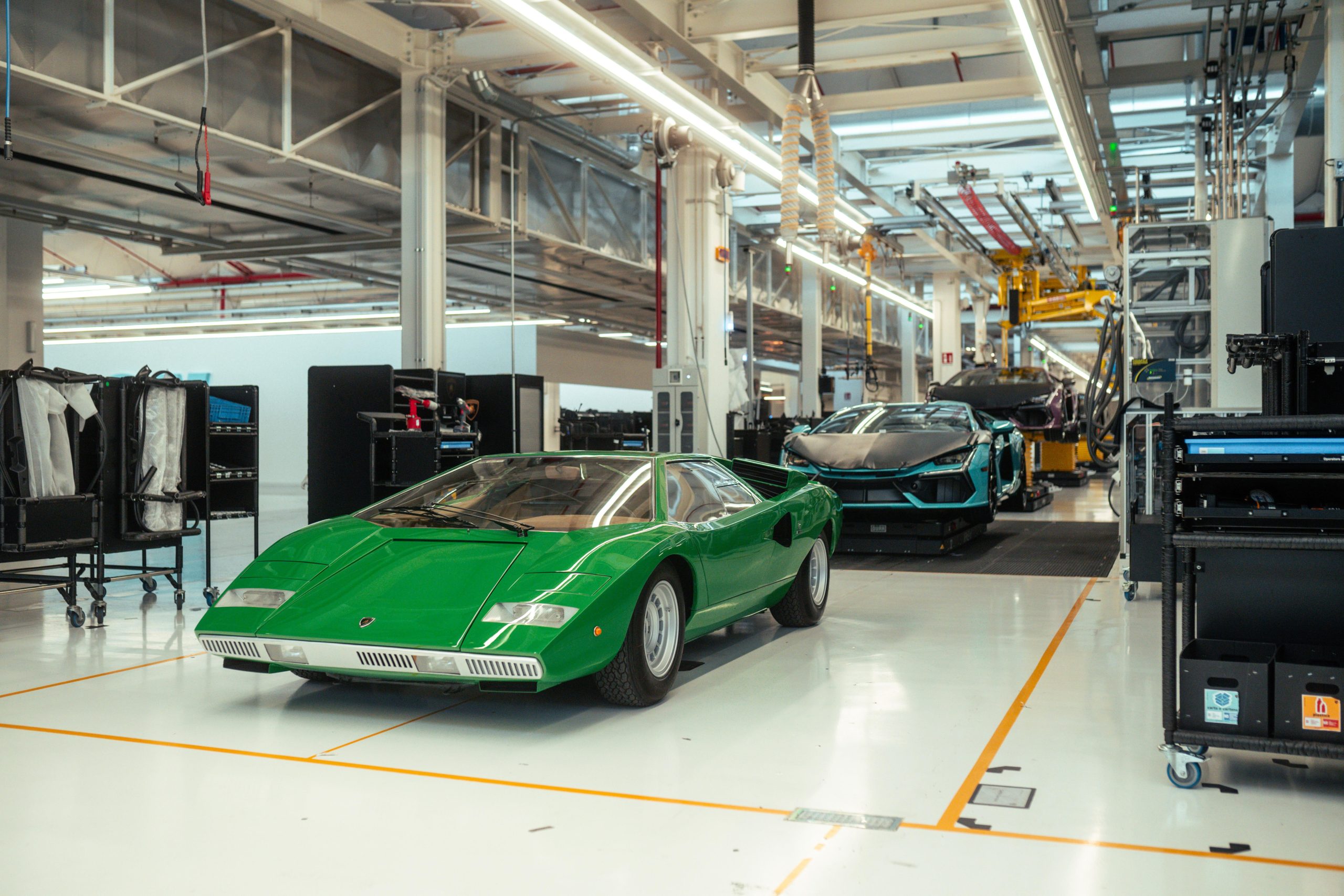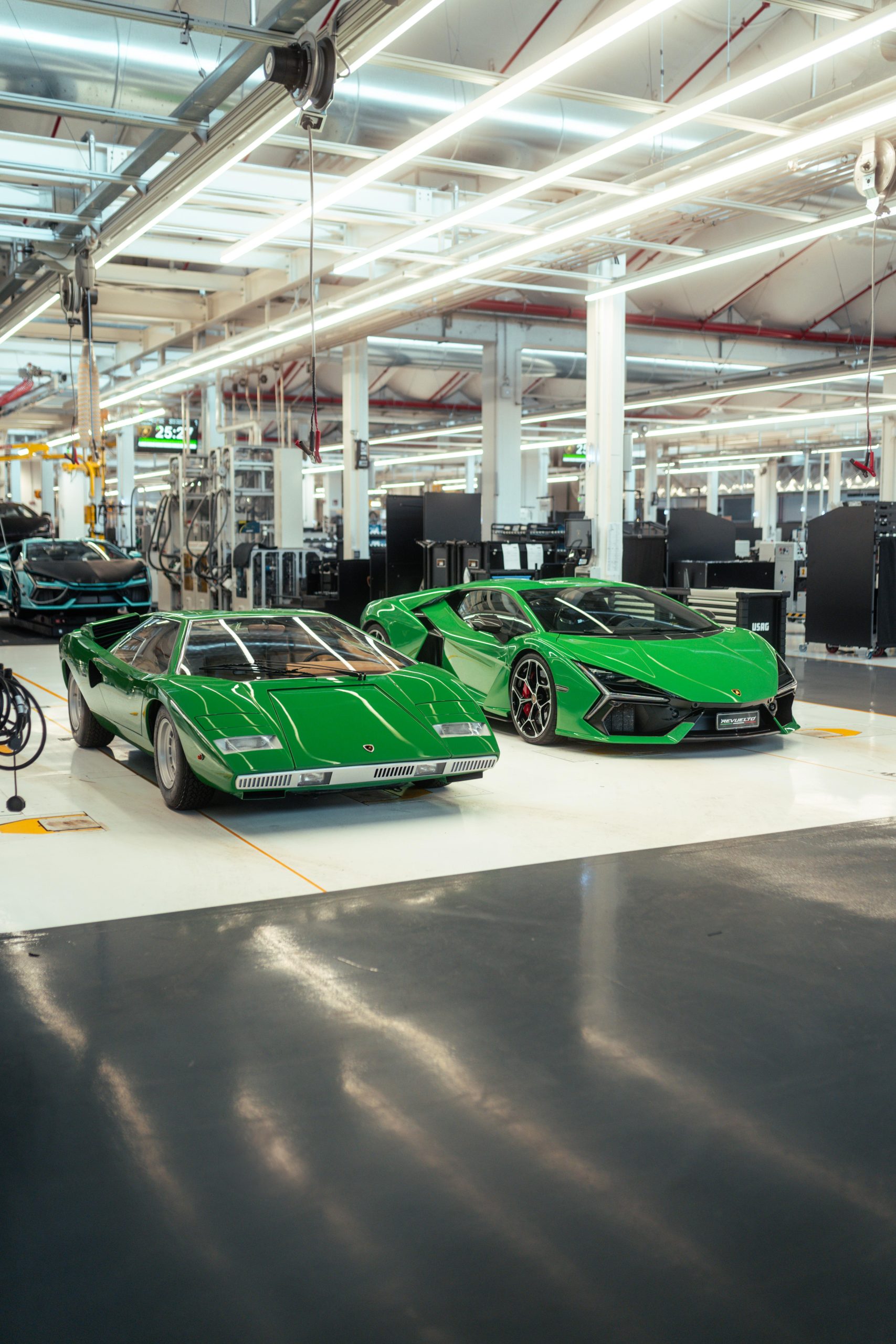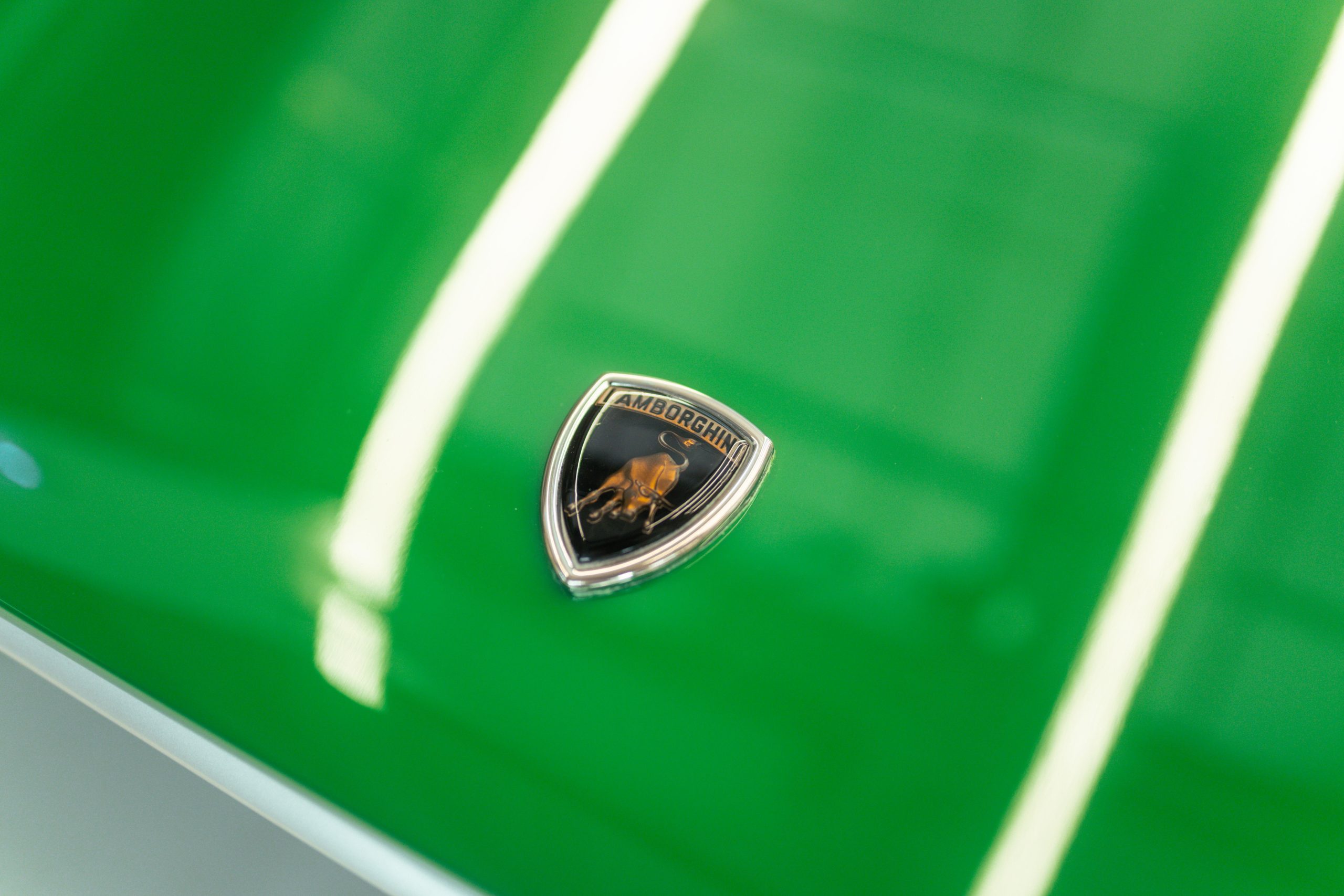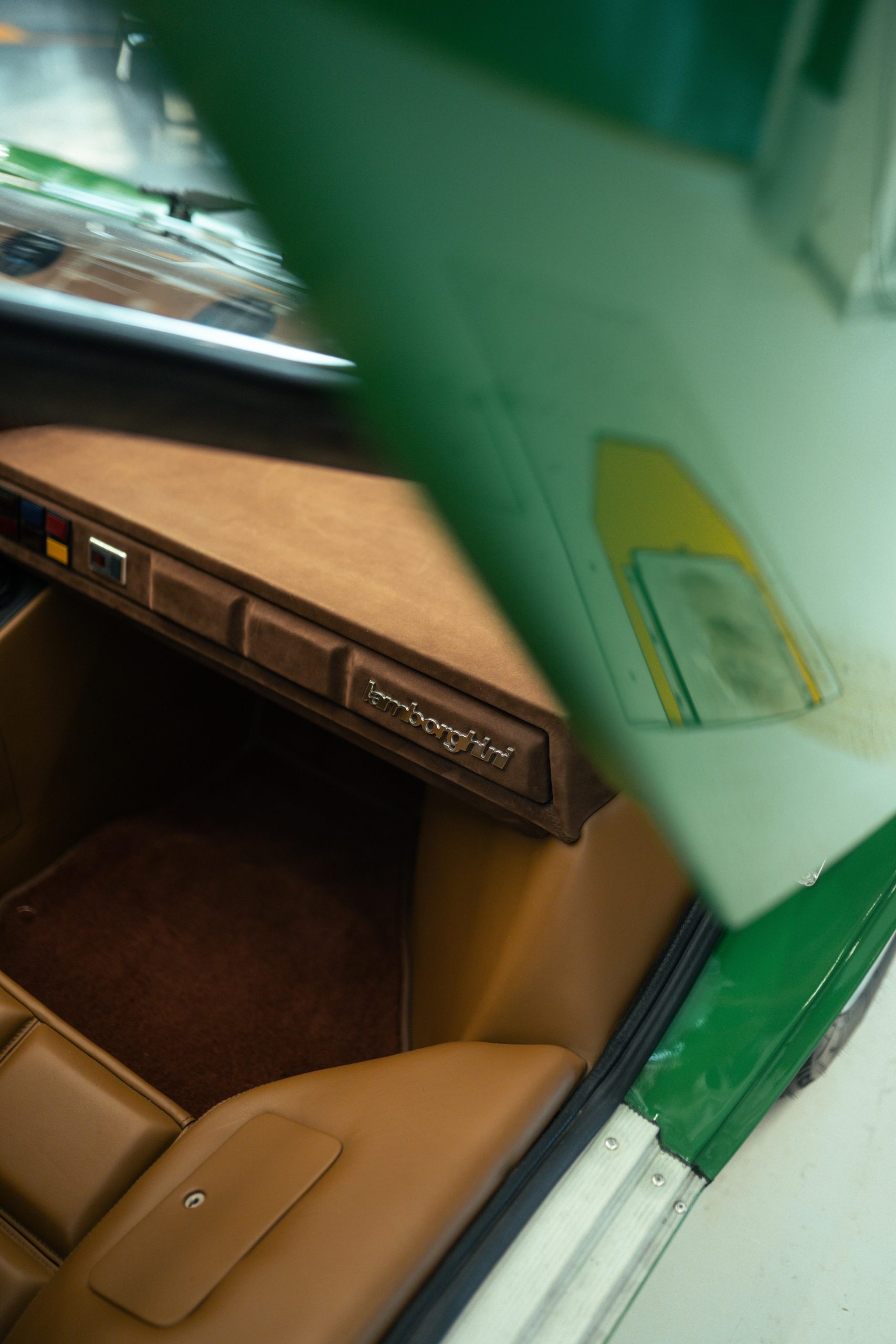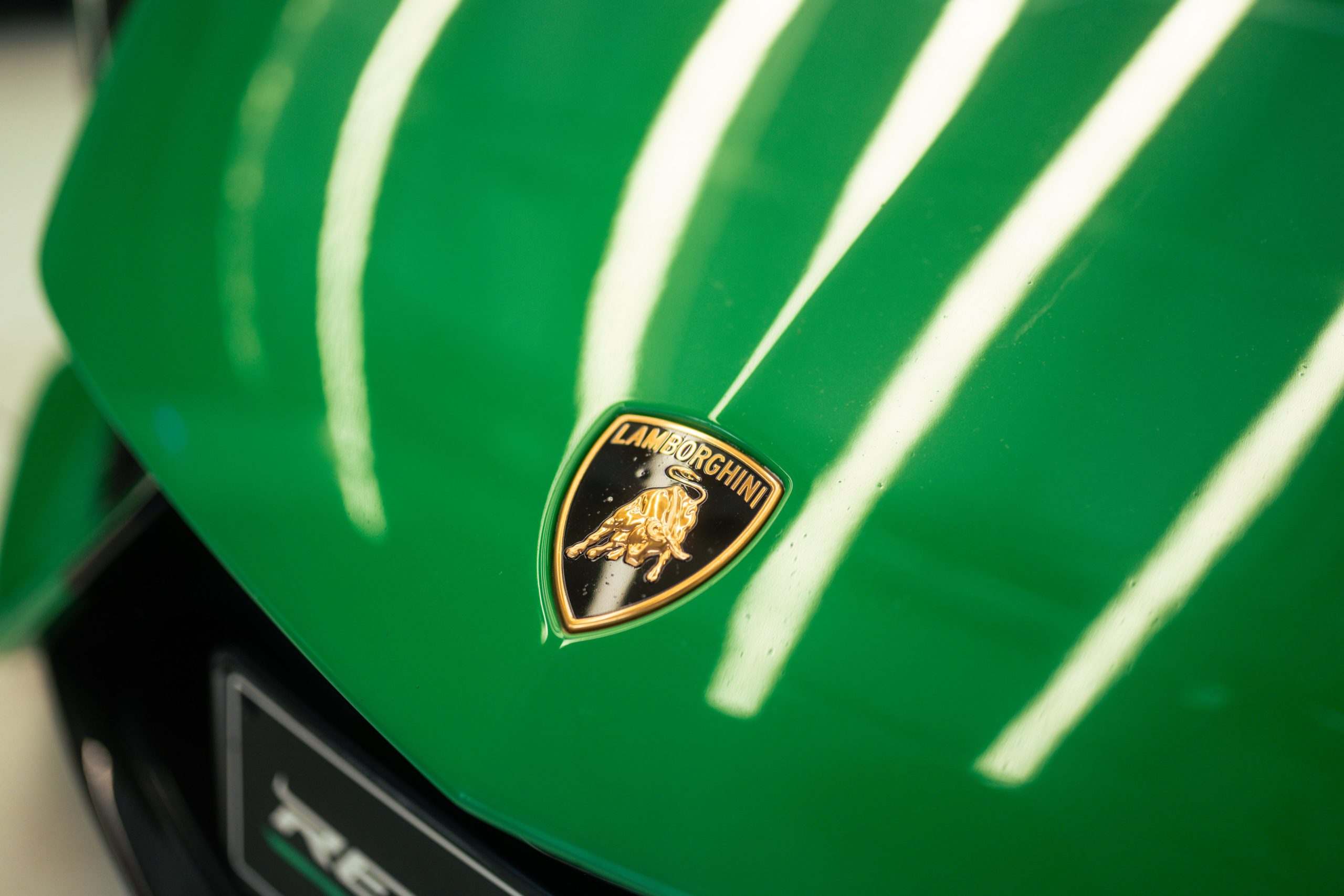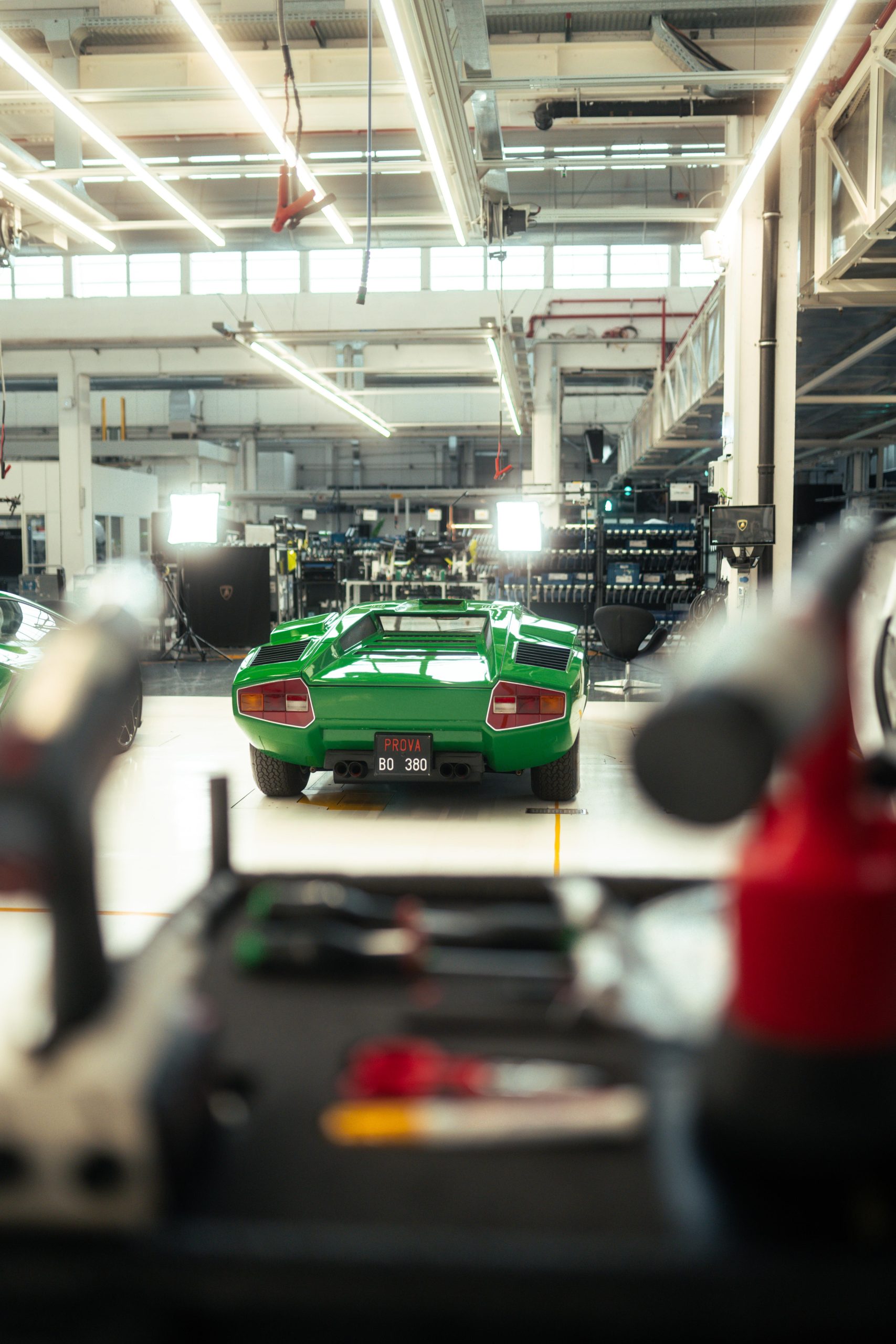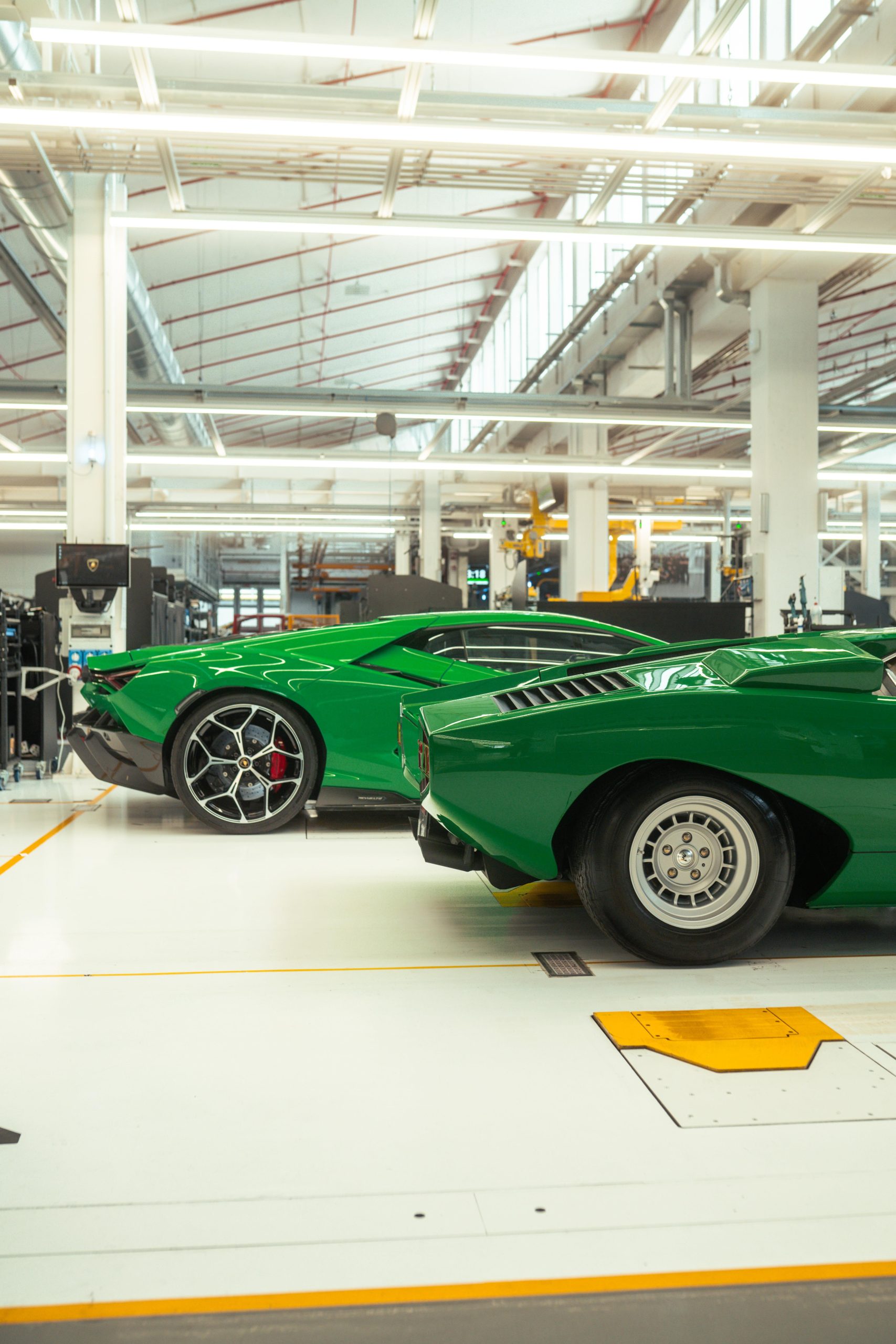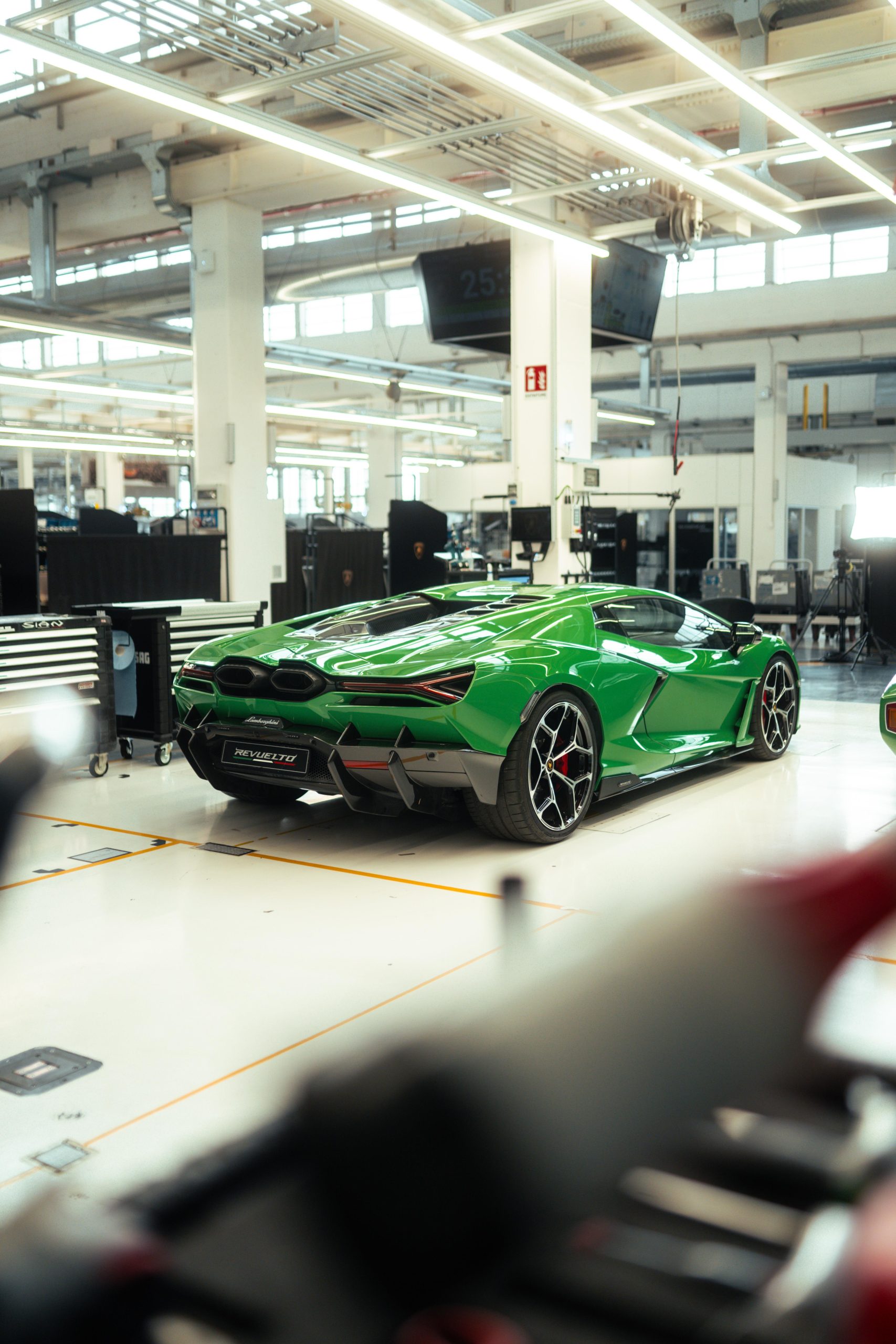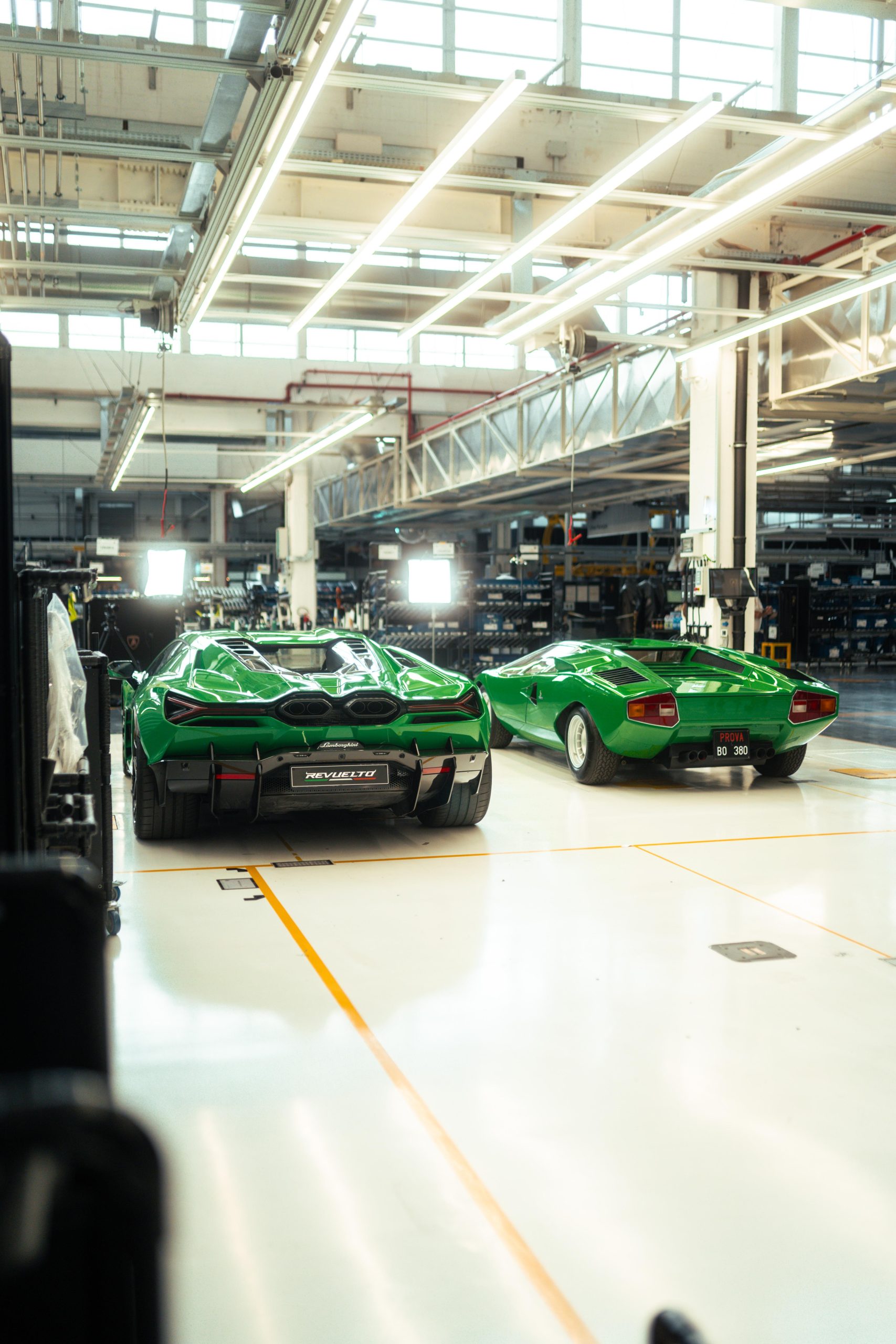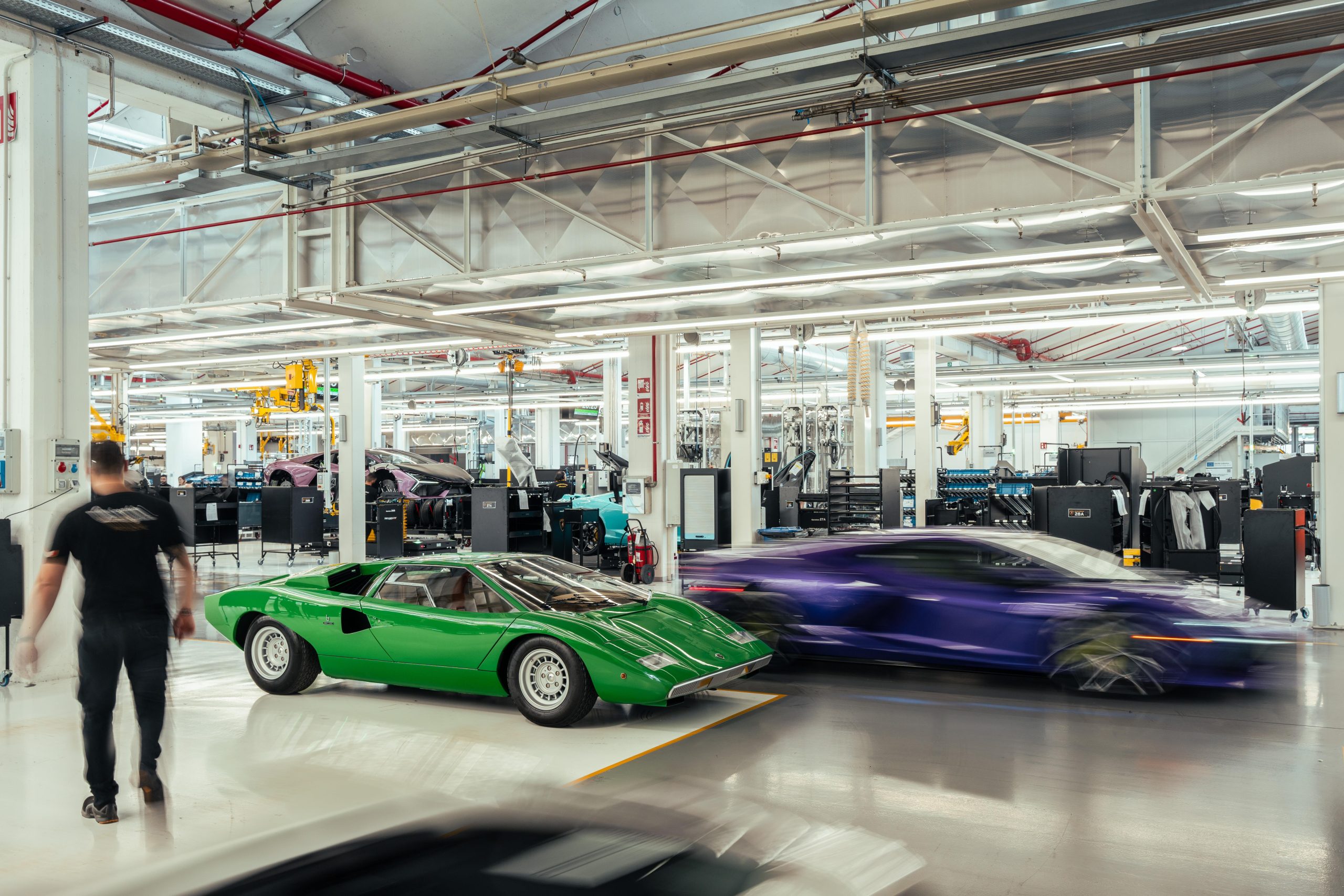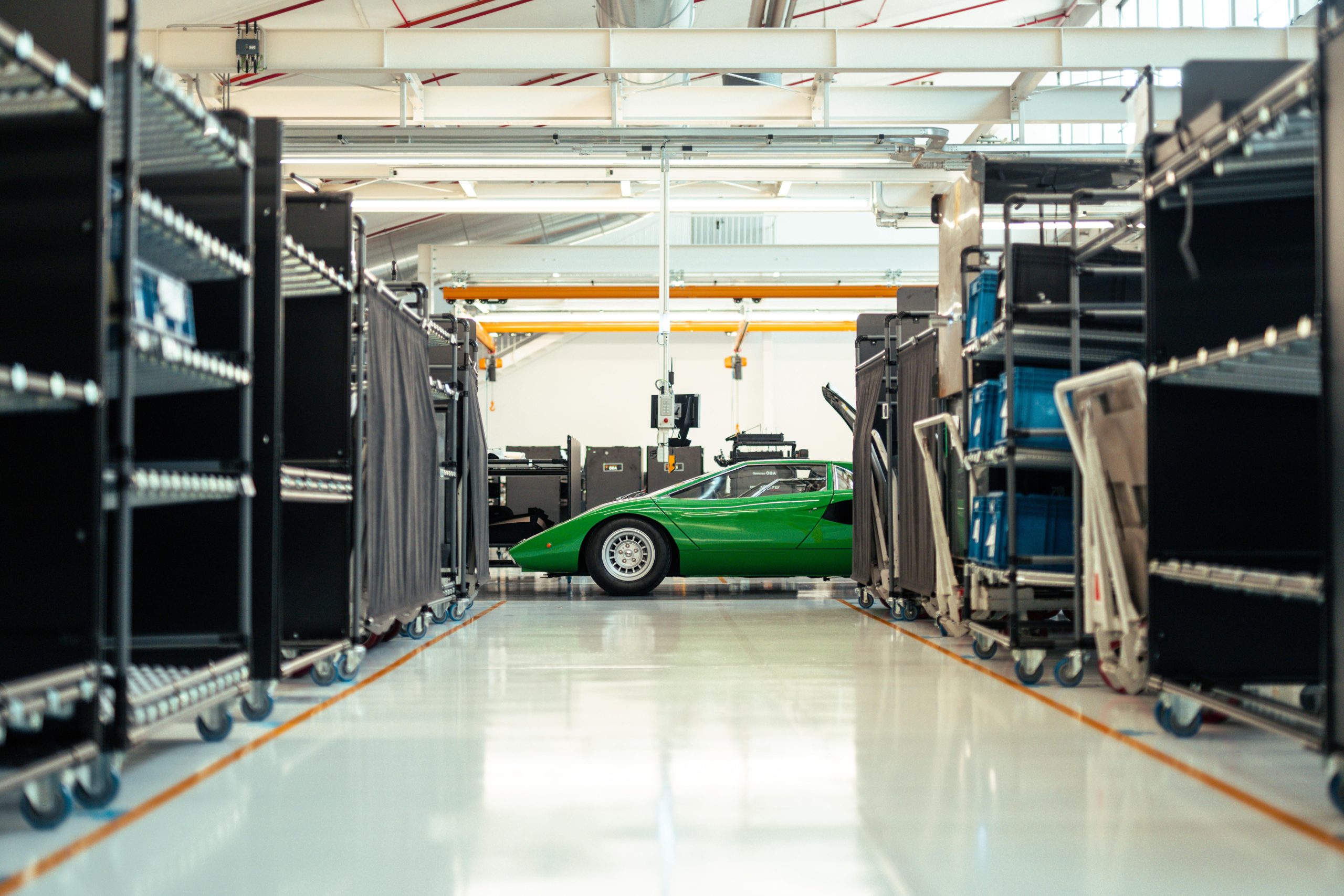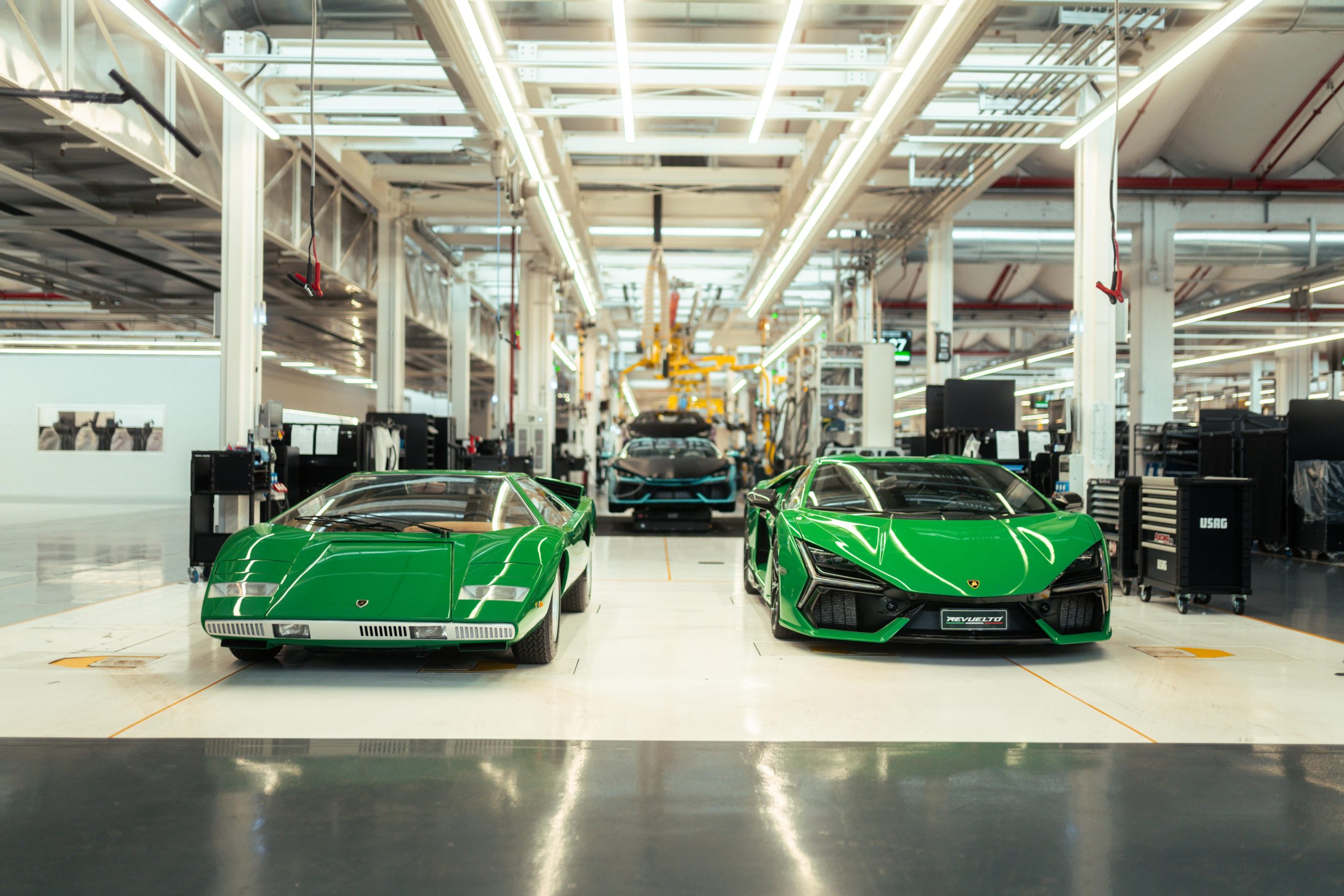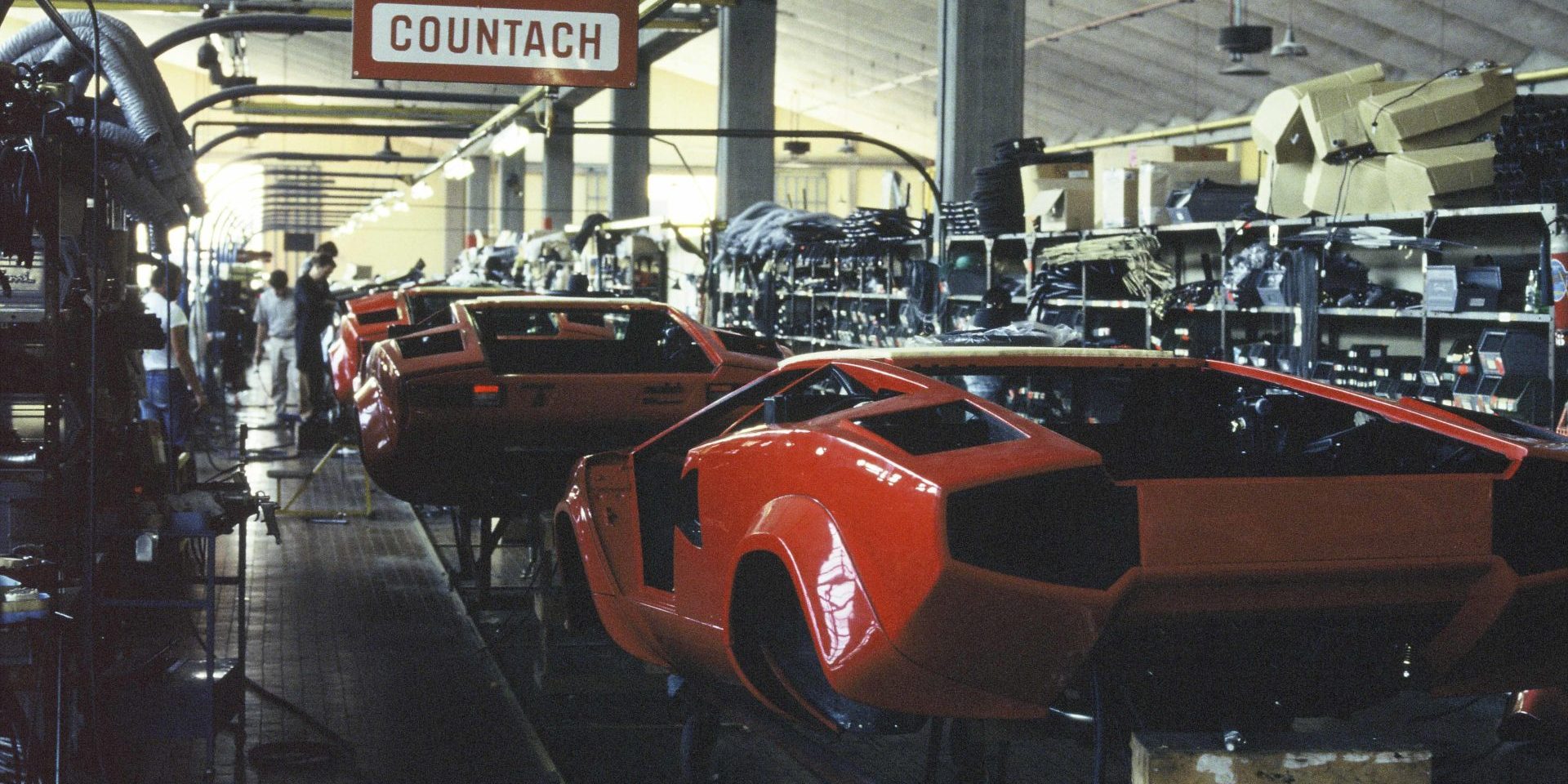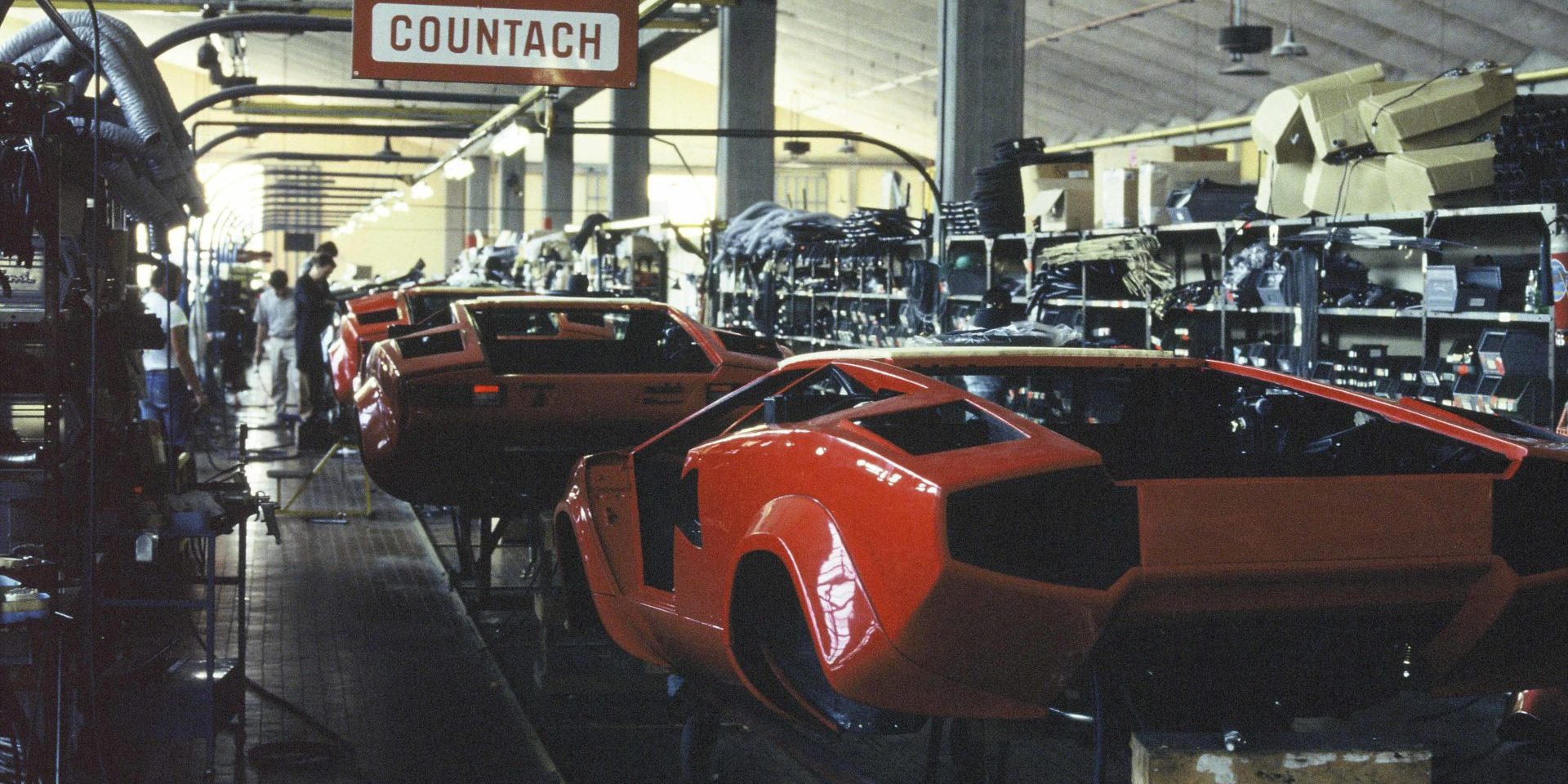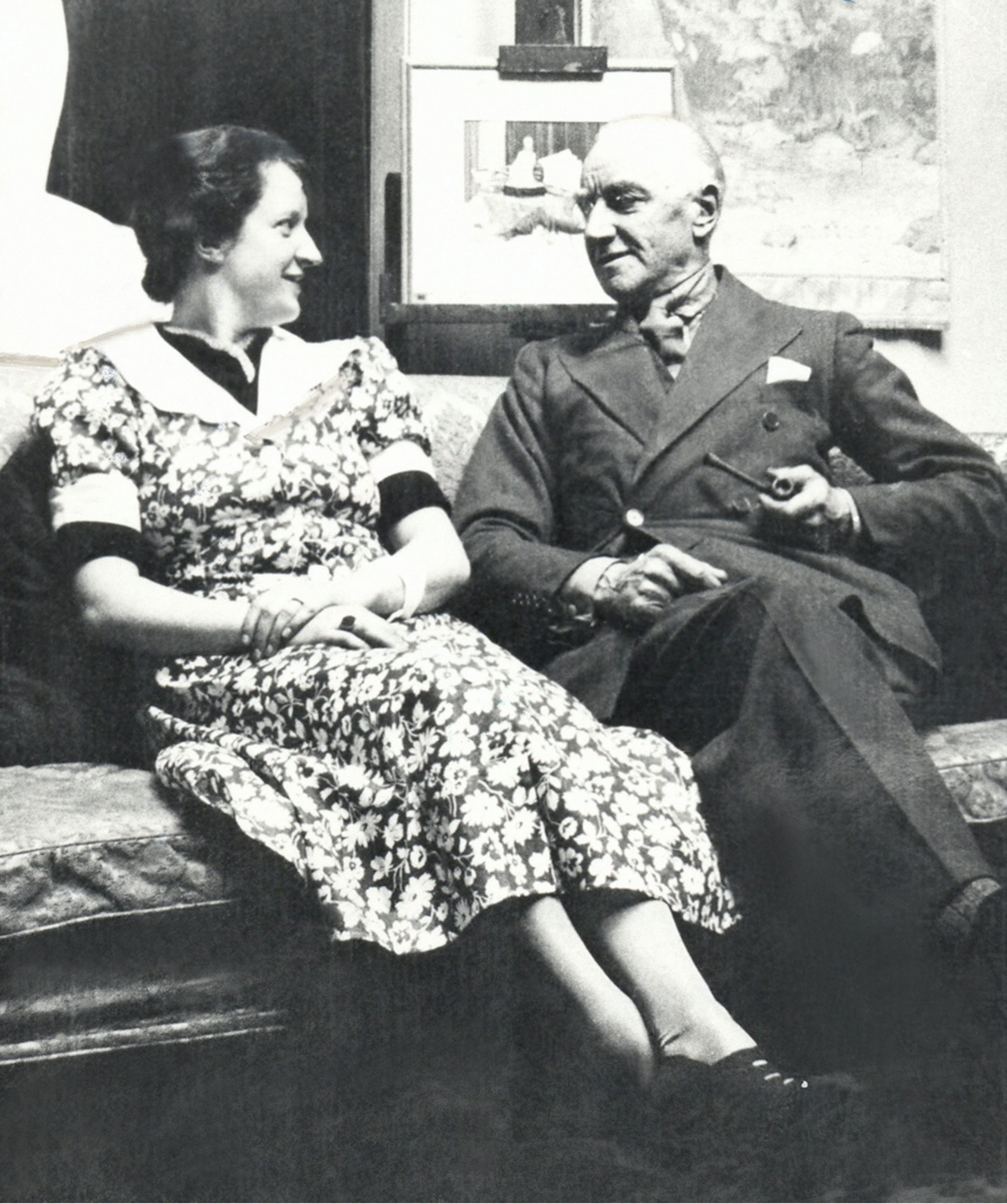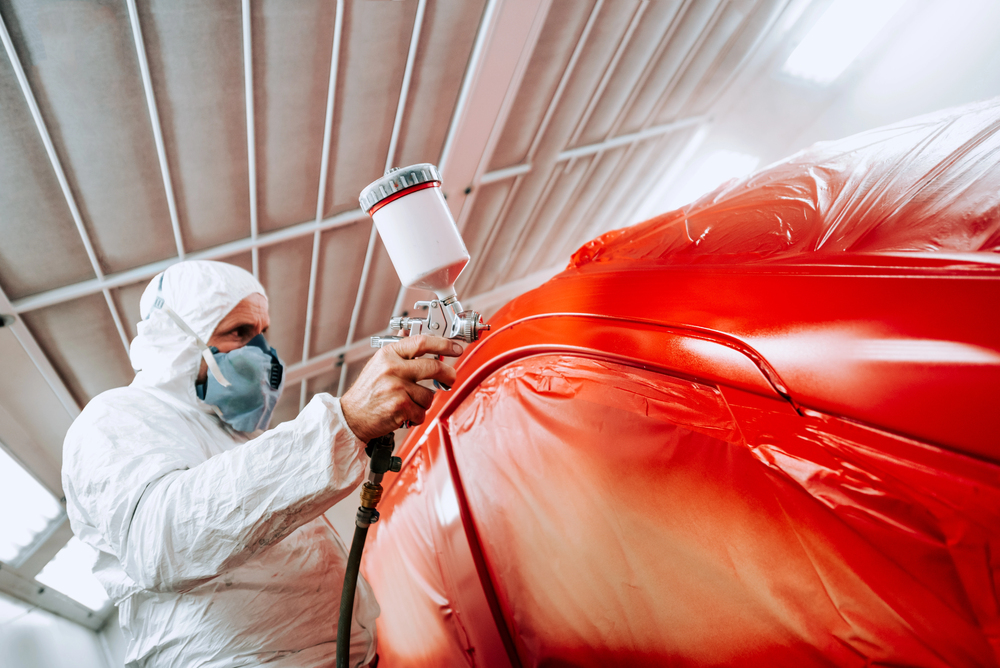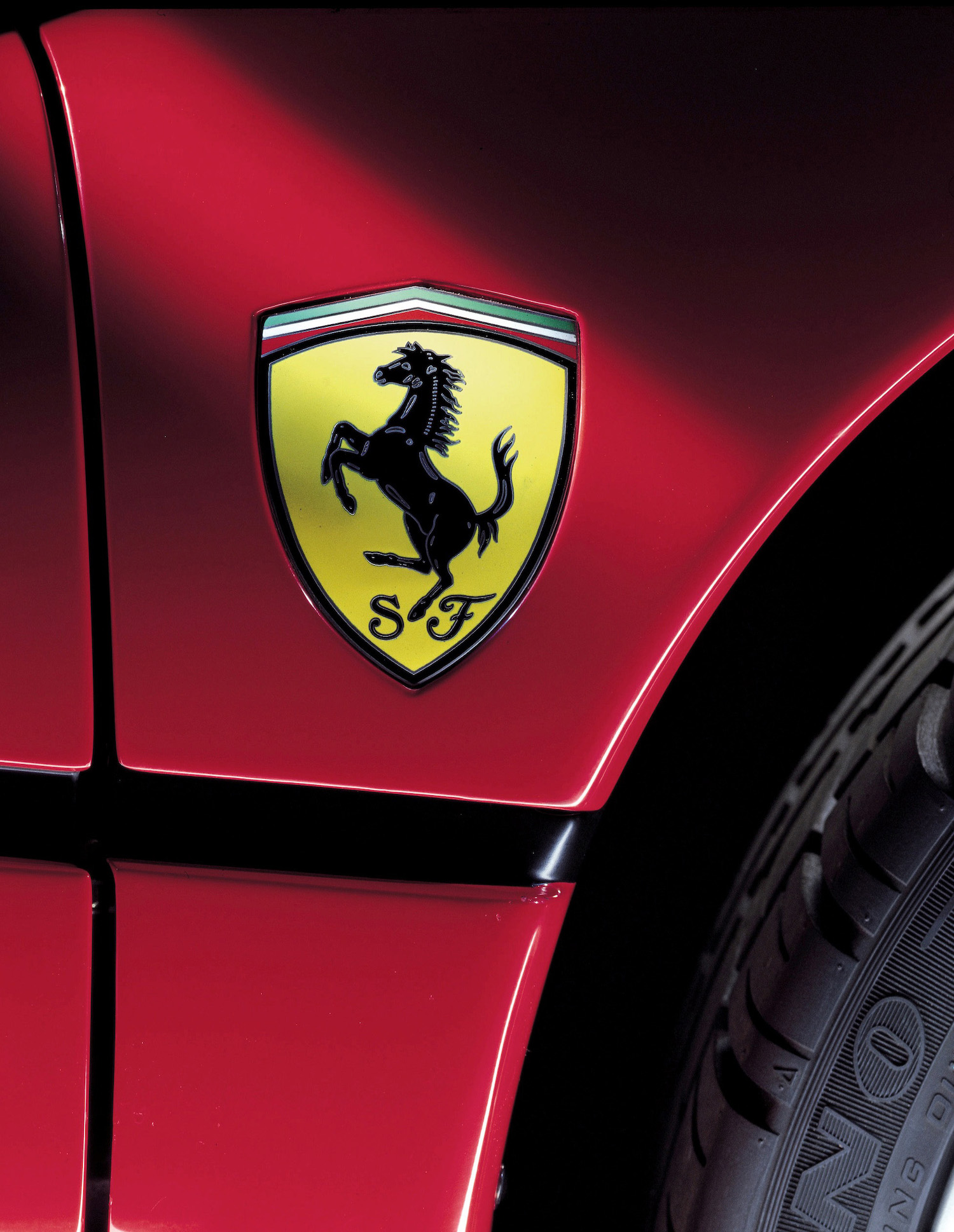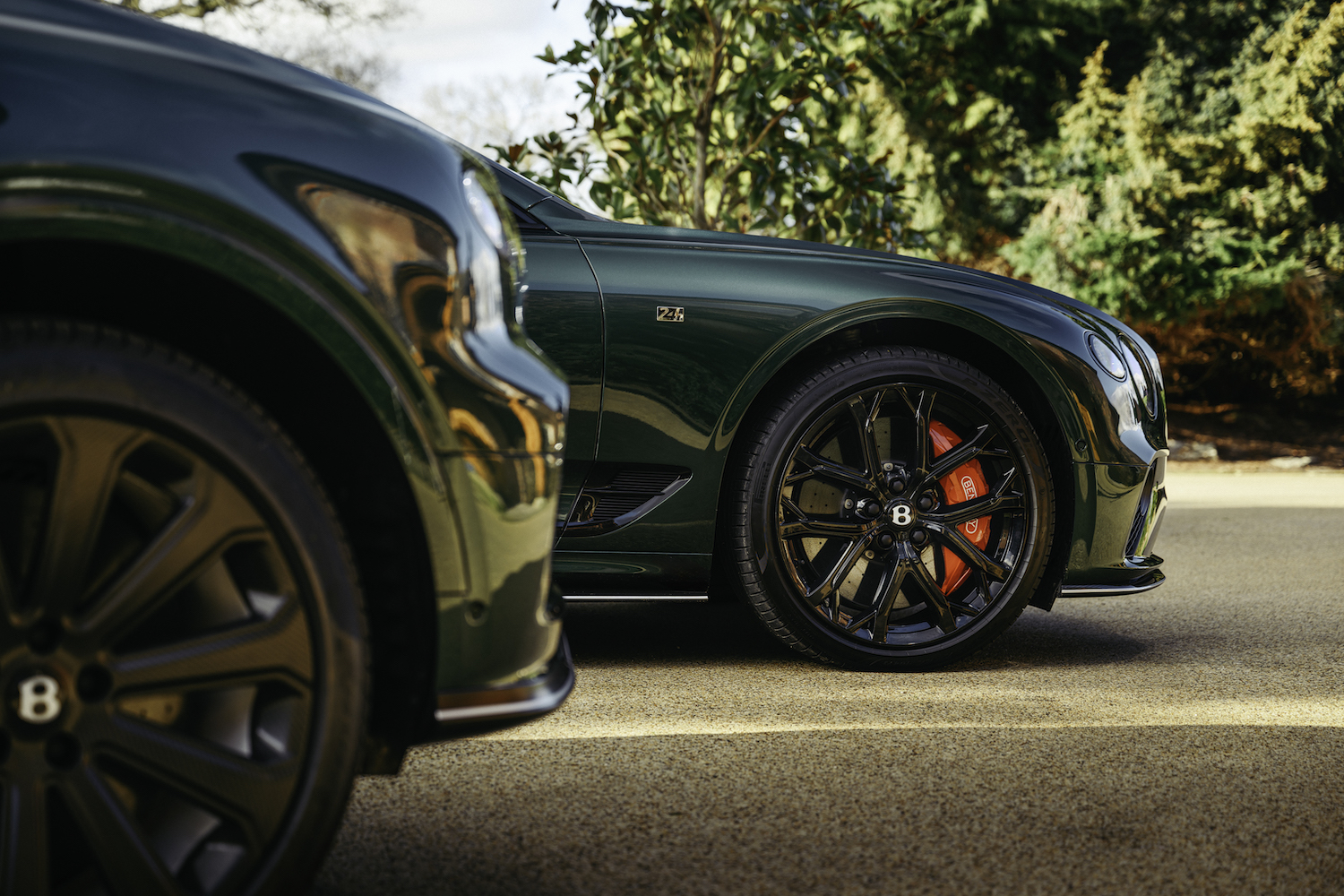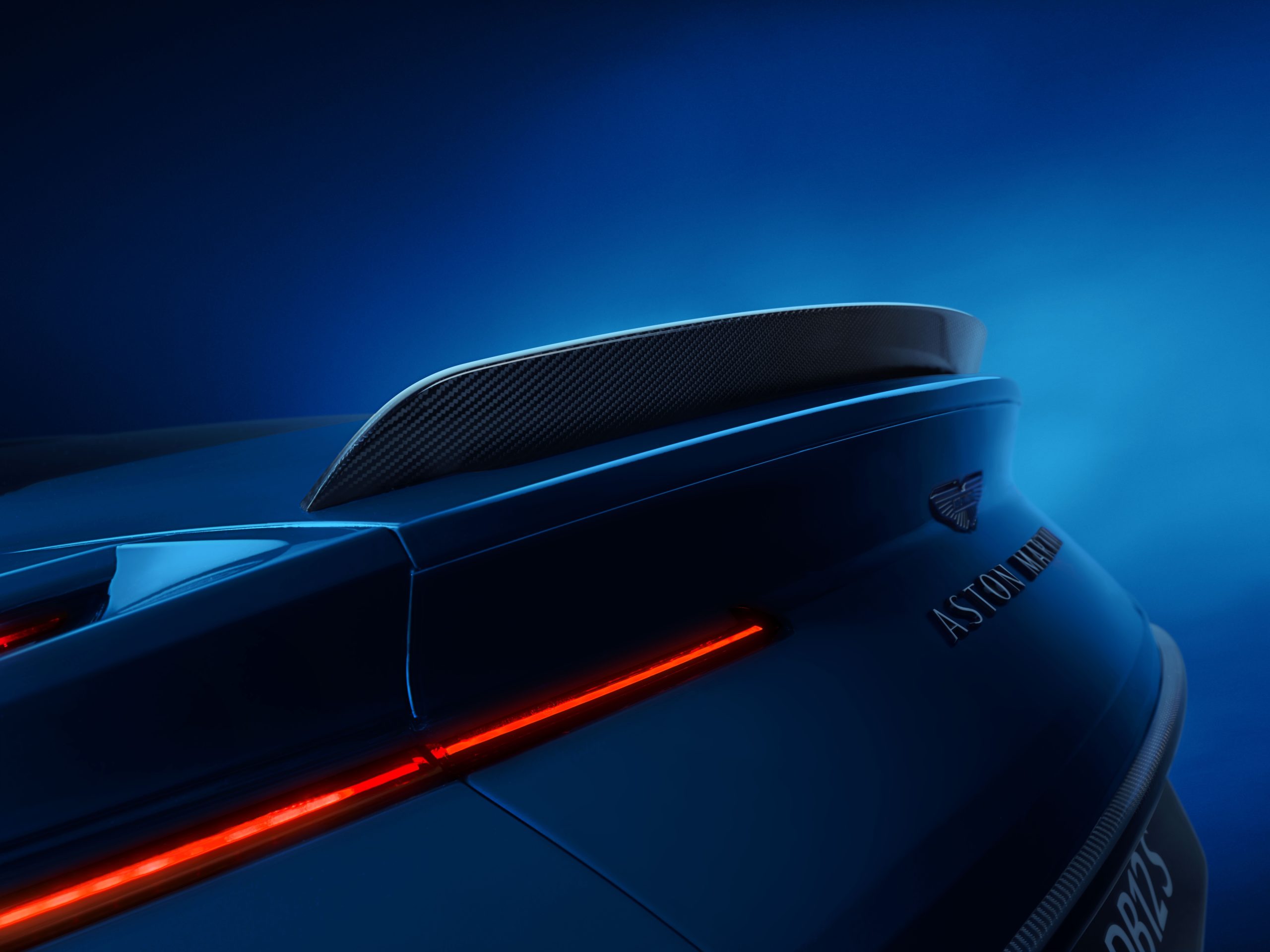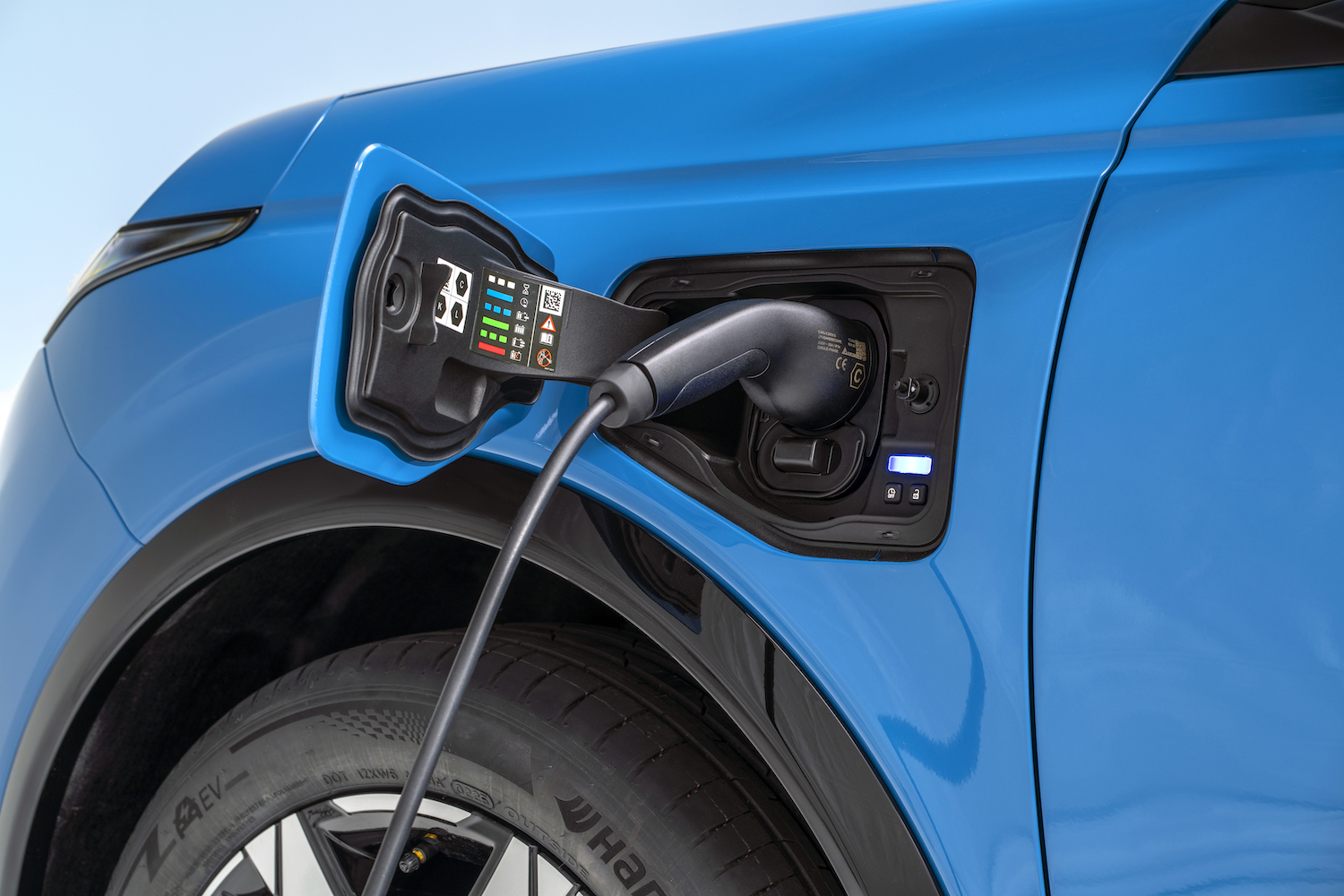It was in March of 1974 when mass production of the Countach started at the Lamborghini factory in Sant’Agata Bolognese; a model that entered into legend and remained on the market for a full 16 years. The Countach was the first Lamborghini whose bodywork was made “in-house” with panel-beating carried out by hand, and the first whose interiors were produced by the Lamborghini Upholstery Department, a real revolution which, 50 years on, has become a tradition at Sant’Agata Bolognese. On the occasion of this anniversary, Lamborghini has brought back the very first Countach LP 400 to the production line on which it was created, and where today the Lamborghini Revuelto is produced, for a past and present photo shoot. Furthermore, Lamborghini has made some exclusive images of the Countach line available from its archives.
“We are proud to still be producing our super sports car models in the place where the Countach was created,” commented Ranieri Niccoli, Lamborghini’s Chief Manufacturing Officer. “Production has radically changed since then and there was a marked transformation of many aspects starting with the production of the Countach right through to today’s models. Today our production is very different from 1974, but it retains the best aspects and brings together the manual skills of our operators and the best available technologies, giving rise to the so-called Manifattura Lamborghini Next Level. The common denominator between the production of the Countach and our cars today is attention to detail.”
Evolution of the Countach
The Lamborghini Countach LP 500 was presented at the Geneva Motor Show on 11 March 1971, as an idea car, and its immediate success made the decision to make it a production car an easy one. It took several prototype cars and three years of technical development and intense road testing to get the production model, the Countach LP 400, ready. While the car was being developed, work was going on at Sant’Agata Bolognese to create the production line where the Countach would be produced. This was another way in which the Countach was revolutionary: for the first time in Lamborghini’s history, the bodywork would be made in-house. Up to that point, Lamborghini cars had been made in two different places, with the mechanical parts produced by Lamborghini, and the bodywork built by external coachbuilders and then sent to Sant’Agata Bolognese to be put together with the frame and mechanical parts. The decision to bring the production of the bodywork in-house at the Lamborghini factory had an immediate and significant impact on the growth of the company.
No.1 Countach Assembly Line
The original Lamborghini factory comprised a 12,000 m2 covered area, with construction starting in 1963 and finishing in 1966, the same time as the gearbox and differential also started to be produced in-house. The factory included the production area, offices, testing rooms and service workshop. Production included two production lines: one for the engines and mechanical parts and the other for car assembly. On 18 October 1968, Lamborghini announced the forthcoming completion of the construction of three new industrial buildings, adding 3,500 m2 of covered area. Today the factory is quite different, covering an area of 346,000 m2, but the area where the Countach was assembled, known as the No.1 Countach Assembly Line, remains the same, and is now where the Revuelto, the new Lamborghini 12-cylinder plug-in hybrid car, is produced. During the Countach years, the assembly line was simple and small scale, with all the operations carried out manually. The bodywork panels were beaten and then checked on a wooden template before being welded together and adjusted on the car body mold. This final processing was essential, given that each part, having been produced and assembled by hand, appeared identical to the others but in reality each was slightly different. The complete body, still in raw aluminum, was then combined with the frame. This unit, sitting on an industrial trolley that ran on rails, traveled between the various assembly stations where the different mechanical parts were fitted. The Countach was also the first to involve the Lamborghini Upholstery Department, which in the beginning was only for the fitting and assembly of the interiors in partnership with external suppliers. It eventually became completely autonomous, including in terms of leather upholstery and stitching, becoming an essential part of the personalization still offered today by Lamborghini to its clients through the Ad Personam program. Today, the production line has changed, as has the machinery and materials used and is much more organized, efficient and ergonomic. While in the 1970s aluminum was used, now there is carbon fiber, which is also produced at the Sant’Agata Bolognese site. What hasn’t changed is the passion and care with which the operators produce the new cars.
Continuity between the Countach and Revuelto
Half a century separates the Countach and Revuelto, and during this time the volumes have also changed: in the 16 years of production of the Countach, 1999 units were produced; the 11 years of production of the Diablo generated 2903 units; the nine years of the Murciélago produced 4000 cars; and the 11 years of the Aventador over 11,000. Despite these differences, united by the production site, there are many common features between the Countach and Revuelto. First of all, the general technical set-up is the same, with a 12-cylinder rear engine in the longitudinal position. However, on the Revuelto there is also the battery pack, which led to the shifting of the gearbox to the rear of the V12 engine. The driving set-up is the same, as are the “Scissor” doors, which were first seen on the Countach before becoming a distinctive feature of Lamborghini V12 cars. What’s more, in the stylistic features, which showed extraordinary continuity from the Countach to the Diablo, then to the Murciélago and Aventador, the subtle visual line that runs between the front fender and the cockpit roof, ending with the rear spoiler, is in fact known as the “Countach line”.
All the Countach models
The first version of the Countach, with 152 units produced, was the LP 400 (1974-1978), featuring fenders without extensions and the roof with central recess designed for the rearview mirror, which earned it the nickname “Periscopio”. The LP 400 S (1978-1982), with 235 units, was derived directly from the special LP 400 that the Canadian enthusiast Walter Wolf commissioned at Lamborghini. The LP 400 S was characterized by the adoption of Pirelli low-profile tires, wheel arch extensions, “phone dial” wheels and the aerodynamic appendage positioned below the front part. This configuration, albeit improved and better integrated in later versions, became the distinctive feature of the Countach for the following decade. The 5000 S (1982-1984), produced in 323 units and with few changes in terms of aesthetics, featured a V12 with increased displacement of 4.8 liters. The Countach Quattrovalvole that followed (1985-1988), with 631 units, was visually characterized by the “hump” on the hood, necessary to contain the 5.2-liter engine, equipped with a 4-valve timing system for each cylinder. The Countach 25th Anniversary (1988-1990), with 658 units, was created to celebrate 25 years since the foundation of the company, and involved a total overhaul of the Countach’s aerodynamic appendages. The air intakes on the rear fenders and some panels, such as those on the hoods, also changed, and were made of carbon fiber for the first time. It is worth noting how the commercial success of the Countach was always on the rise and how it was the last two versions that were produced in the greatest numbers, benefiting from the type-approval obtained for sale of the Countach on the American market.
During the years it was marketed, the Countach was the model that, as well as ending up on the walls of an entire generation and being used in dozens of films, enabled Lamborghini to be competitive by the mid-1970s until 1990 and to definitively become a legend.
Lamborghini Countach LP 400 Data Sheet
Engine: 60° V12, in aluminum
Bore x stroke mm: 82 x 62
Capacity: 3929 cc
Compression ratio: 10.5:1
Power: 375 CV at 8000 rpm
Distribution: double overhead camshaft with chain control. 2 valves per cylinder.
Fuel system: 6 Weber 45 DCOE twin carburetors
Wet-sump lubrication
5-speed Lamborghini manual gearbox + R
Clutch: dry, single plate
Chassis: Tubular with aluminum bodywork panels
Suspension: Front and rear independent suspensions with parallelogram action, coil springs and telescopic dampers
Brakes: ventilated disk
Wheelbase mm: 2450
Track mm: front 1500; rear 1520
Tires: Michelin XWX front 205 X 14, rear 215 X 14
Curb weight kg: 1065 kg
Lamborghini Countach LP 400 S Data Sheet
Engine: 60° V12, in aluminum
Bore x stroke mm: 82 x 62
Capacity: 3929 cc
Compression ratio: 10.5:1
Power: 353 CV at 7500 rpm
Distribution: double overhead camshaft with chain control. 2 valves per cylinder.
Fuel system: 6 Weber 45 DCOE twin carburetors
Wet-sump lubrication
5-speed Lamborghini manual gearbox + R
Clutch: dry, single plate
Chassis: Tubular with aluminum bodywork panels
Suspension: Front and rear independent suspensions with parallelogram action, coil springs and telescopic dampers
Brakes: ventilated disk
Wheelbase mm: 2450
Track mm: front 1492; rear 1606
Tires: Pirelli P7, front 205/70-15, rear 345/35-15
Curb weight kg: 1200 kg
Lamborghini Countach LP 5000 S Data Sheet
Engine: 60° V12, in aluminum
Bore x stroke mm: 85.5 x 69
Capacity: 4754 cc
Compression ratio: 9.2:1
Power: 375 CV at 7000 rpm
Distribution: double overhead camshaft with chain control. 2 valves per cylinder.
Fuel system: 6 Weber 45 DCOE twin carburetors
Wet-sump lubrication
5-speed Lamborghini manual gearbox + R
Clutch: dry, single plate
Chassis: Tubular with aluminum bodywork panels
Suspension: Front and rear independent suspensions with parallelogram action, coil springs and telescopic dampers
Brakes: ventilated disk
Wheelbase mm: 2450
Track mm: front 1492; rear 1606
Tires: Pirelli P7, front 205/50-15, rear 345/35-15
Curb weight kg: 1490 kg
Lamborghini Countach Quattrovalvole Data Sheet
Engine: 60° V12, in aluminum
Bore x stroke mm: 85.5 x 75
Capacity: 5167 cc
Compression ratio: 9.5:1
Power: 455 CV at 7000 rpm
Distribution: double overhead camshaft with chain control. 4 valves per cylinder.
Fuel system: 6 Weber 44 DCNF twin carburetors
Wet-sump lubrication
5-speed Lamborghini manual gearbox + R
Clutch: dry, single plate
Chassis: Tubular with aluminum bodywork panels
Suspension: Front and rear independent suspensions with parallelogram action, coil springs and telescopic dampers
Brakes: ventilated disk
Wheelbase mm: 2500
Track mm: front 1536; rear 1606
Tires: Pirelli P7 F, front 225/50-VR15, rear 345/35-VR15
Curb weight kg: 1490 kg
Lamborghini Countach 25th Anniversary Data Sheet
Engine: 60° V12, in aluminum
Bore x stroke mm: 85.5 x 75
Capacity: 5167 cc
Compression ratio: 9.5:1
Power: 455 CV at 7000 rpm
Distribution: double overhead camshaft with chain control. 4 valves per cylinder.
Fuel system: 6 Weber 44 DCNF twin carburetors
Wet-sump lubrication
5-speed Lamborghini manual gearbox + R
Clutch: dry, single plate
Chassis: Tubular with aluminum, fiberglass and carbon fiber bodywork panels (front engine hood and luggage compartment)
Suspension: Front and rear independent suspensions with parallelogram action, coil springs and telescopic dampers
Brakes: ventilated disk
Wheelbase mm: 2500
Track mm: front 1536; rear 1606
Tires: front 225/50-ZR15, rear 345-35/ZR15
Curb weight kg: 1490 kg
